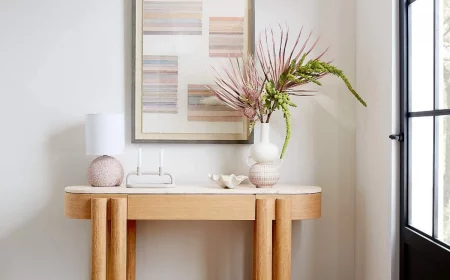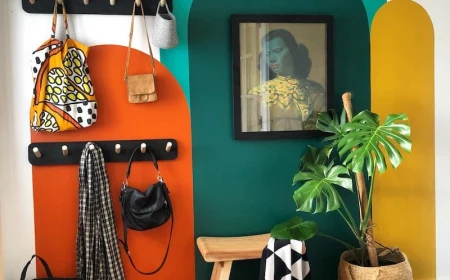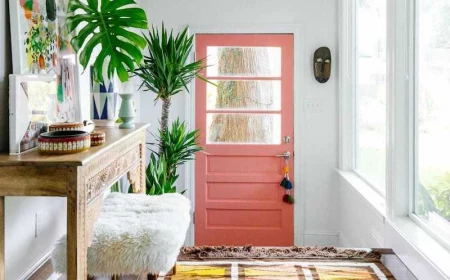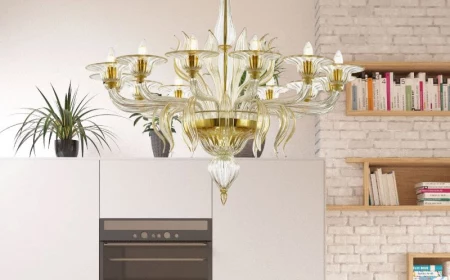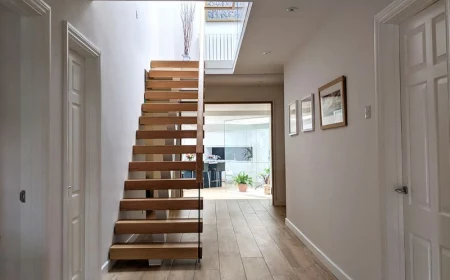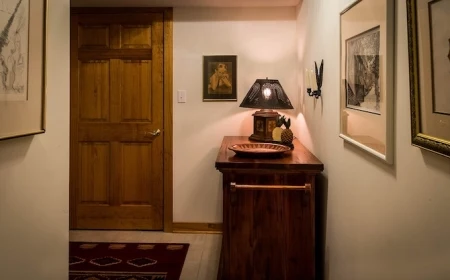Your Narrow Hallway Is Annoying, But Here’s How to Actually Fix It
Let’s be honest, hallways are often the most overlooked and unloved spaces in our homes. We pour our hearts (and wallets) into kitchens and living rooms, but that first impression—the very first space you walk into—gets completely ignored. A cluttered, dark corridor just feels unwelcoming. It has a nasty habit of making the entire house feel smaller and more cramped, whether you’re in a tight city apartment or an older suburban home.
So many people feel stuck. They see a narrow path and just assume there’s nothing to be done. But that’s where they’re wrong. Turning these forgotten passages into bright, functional parts of a home isn’t about magic tricks. It’s about understanding a few key principles of space, light, and materials. I’ve spent years in the trade as a finish carpenter and interiors guy, and I’m going to walk you through the practical, professional methods that make a real difference.
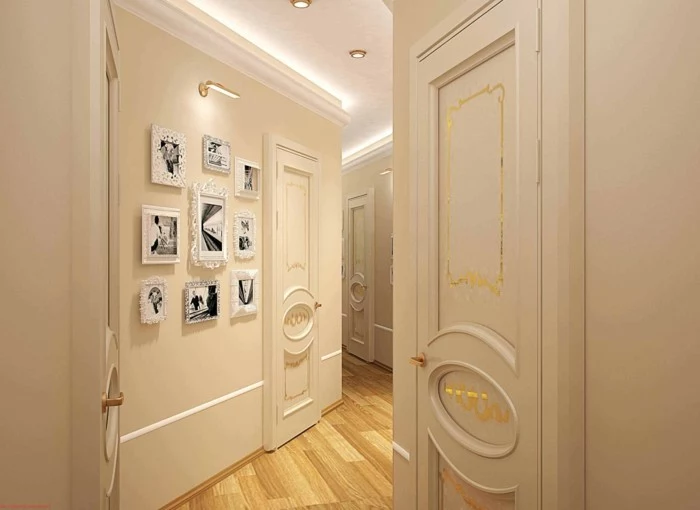
First Things First: It’s All an Illusion
Before you even think about picking up a paintbrush, you need to understand the real problem: perception. A narrow hallway is a visual challenge. Our brains use cues to judge size and distance, so by controlling those cues, we can make the space feel wider and brighter. This isn’t just fluffy design theory; it’s the foundation for every decision you’ll make.
Let’s Talk Light and Paint
Light is your absolute best friend here. The way it reflects off surfaces can completely transform a space, which brings us to paint sheen. A lot of people instinctively grab matte paint because it’s great for hiding imperfections. But in a dark hallway, a true matte finish can feel dead and just soaks up what little light you have. On the flip side, high-gloss paint is a total disaster. It reflects light like a distorted mirror, highlighting every single bump and nail pop on the wall. The glare is harsh and just plain distracting.
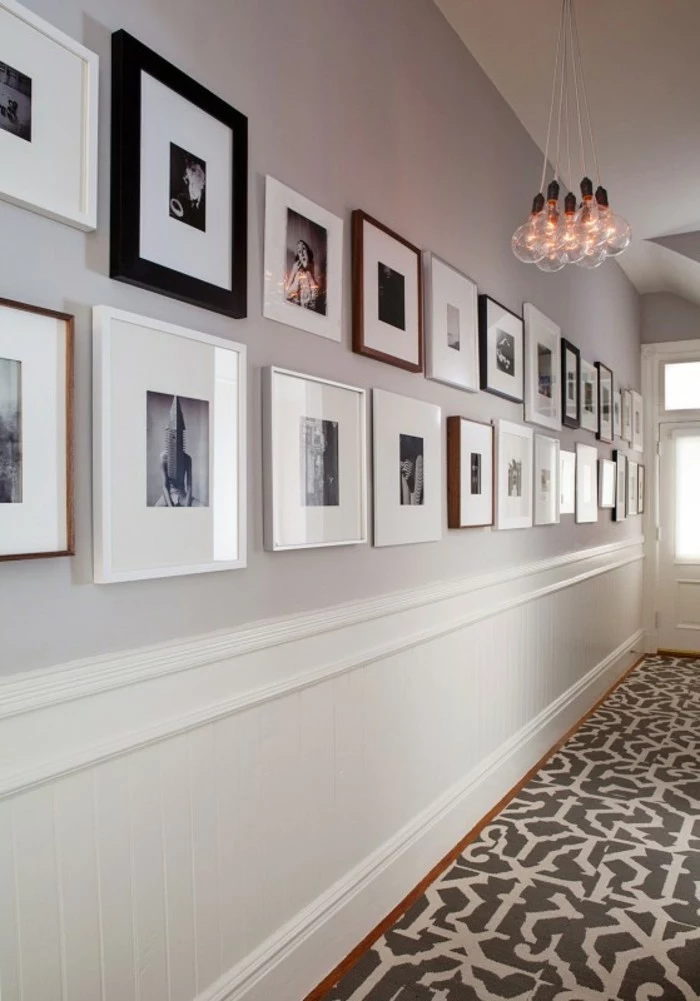
From my experience, the sweet spot is an eggshell or satin finish. These sheens have just enough luster to gently bounce light down the corridor, creating a soft glow that instantly brightens the space. Oh yeah, and they’re way more durable and easier to clean than flat paint—a must for a high-traffic area that gets scuffed by bags and jackets.
I once had a client who insisted on high-gloss paint for their narrow entry hall. They wanted that ‘dramatic shine.’ It ended up looking like a funhouse mirror and reflected every tiny flaw. We spent two days sanding it all down to repaint with eggshell. Trust me on this one, stick with eggshell or satin!
The Deal with Color and Lines
Okay, what about color? The old
Inspirational Gallery

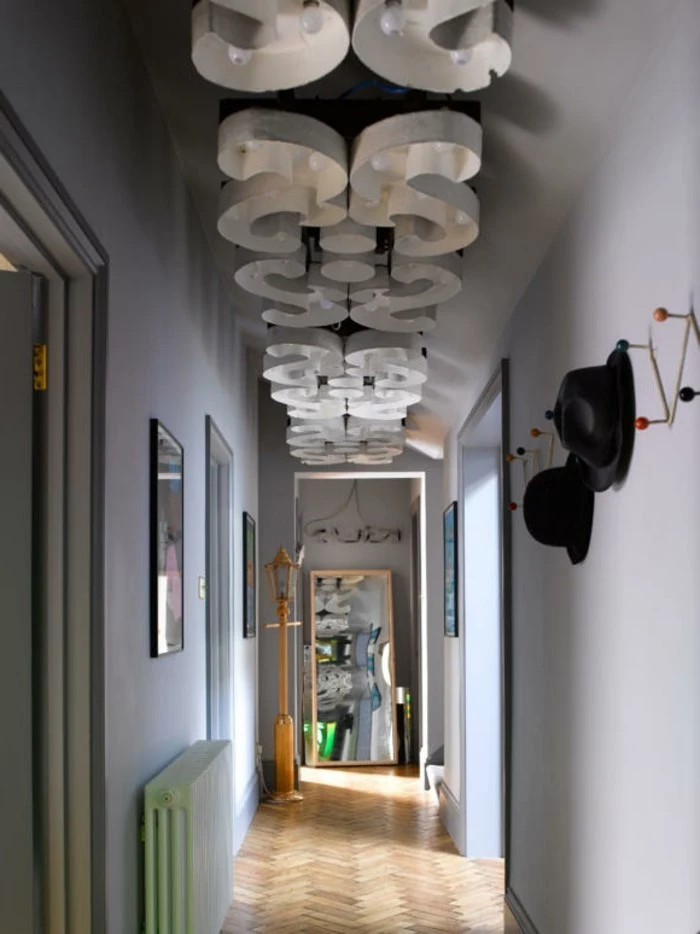
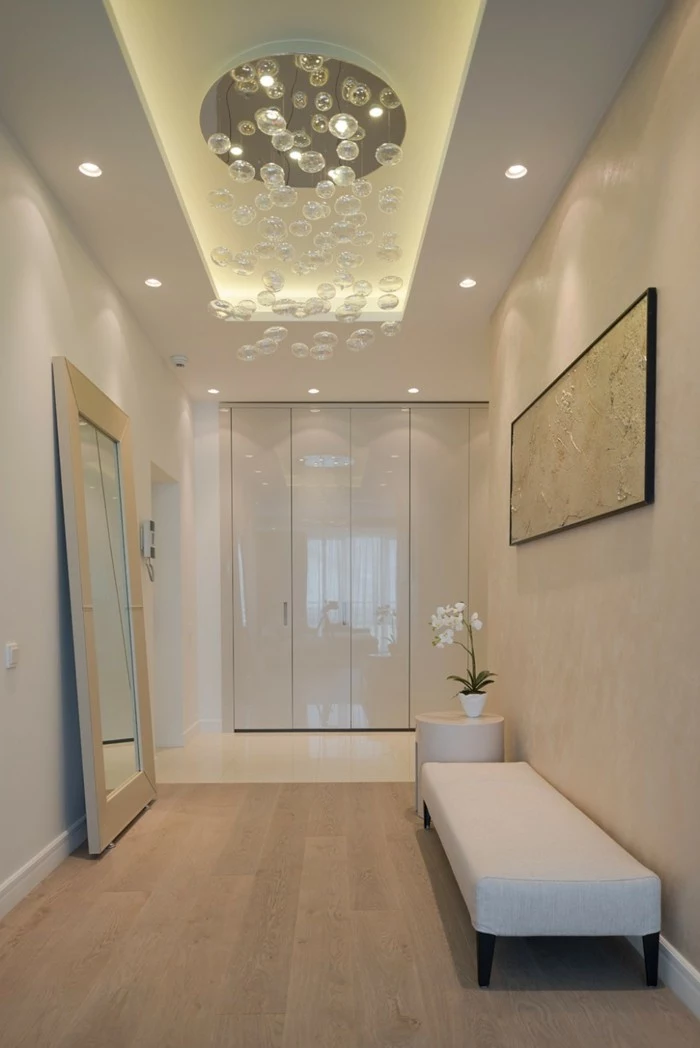
The human eye is drawn to the furthest point in a space. In a narrow hallway, this can create a tunnel effect.
To combat this, treat the wall at the end of your hallway as a destination. Paint it a slightly darker, moodier shade than the side walls, or hang a single, compelling piece of art. This visual ‘stop’ shortens the perceived length of the corridor and gives the space a sense of purpose rather than just being a passage.
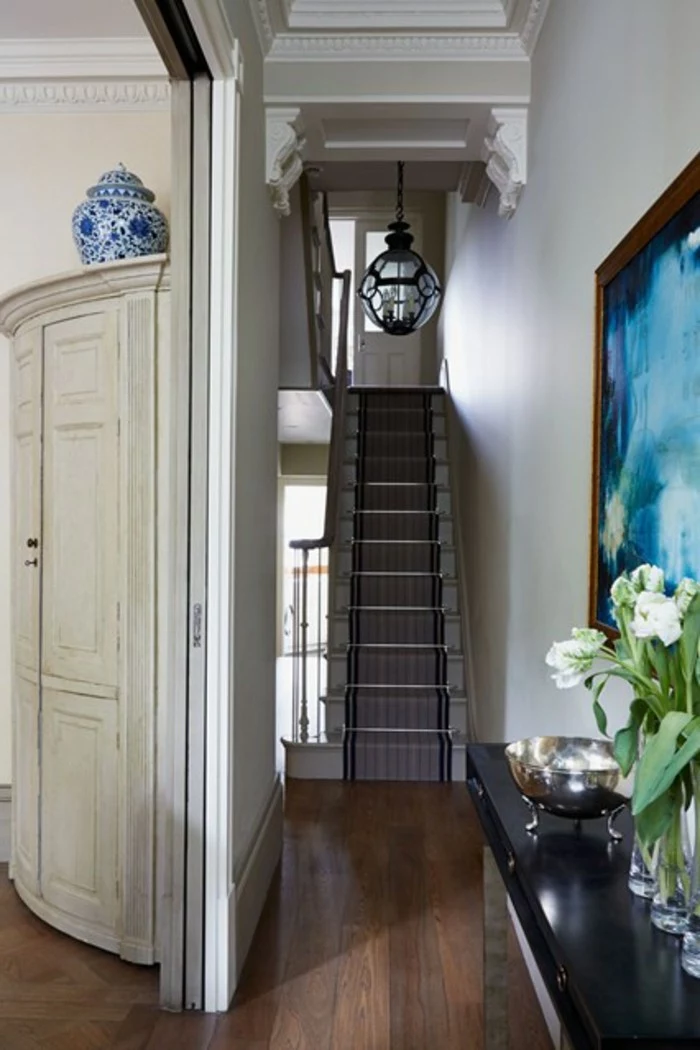
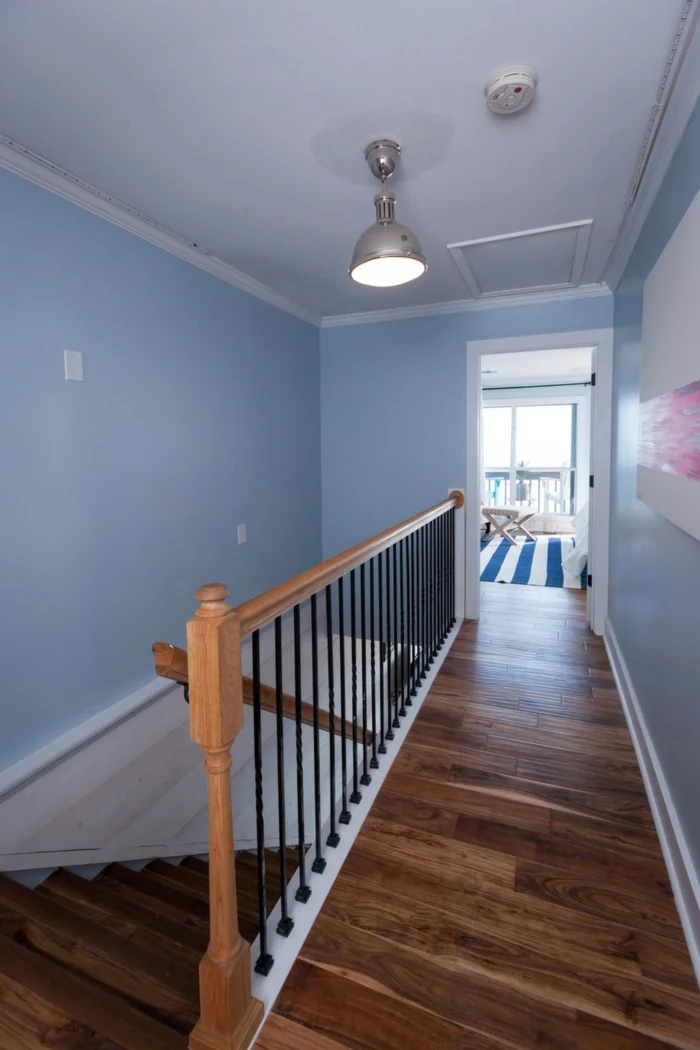
When selecting a runner, the pattern direction is more important than you think. Horizontal stripes can create the illusion of a wider path, visually pushing the walls apart. Conversely, a runner with strong vertical stripes will only accentuate the length and narrowness of the hall. Look for geometric patterns, like diamonds or chevrons, which create dynamic movement without exaggerating the corridor’s challenging dimensions.
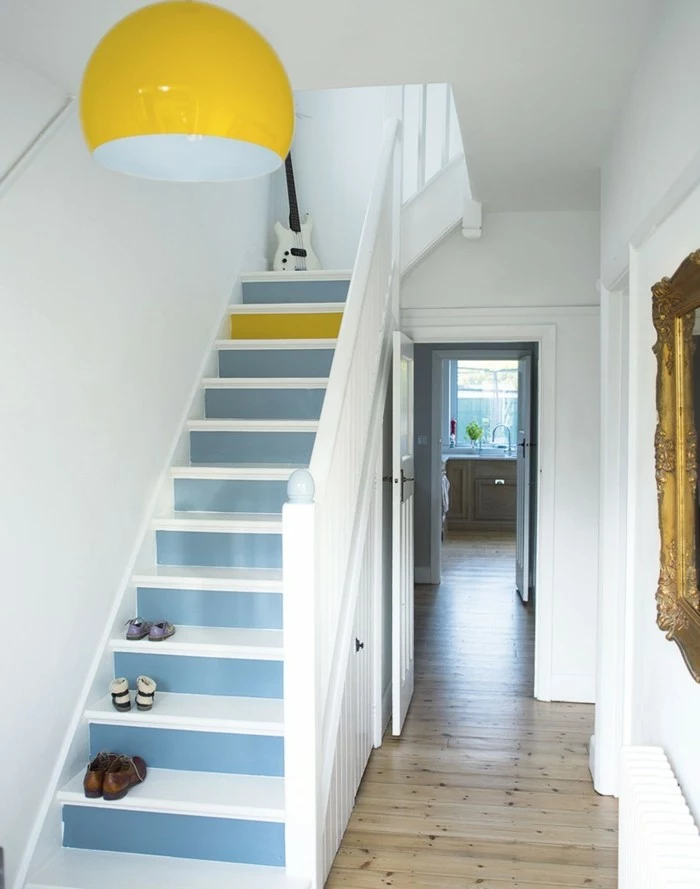
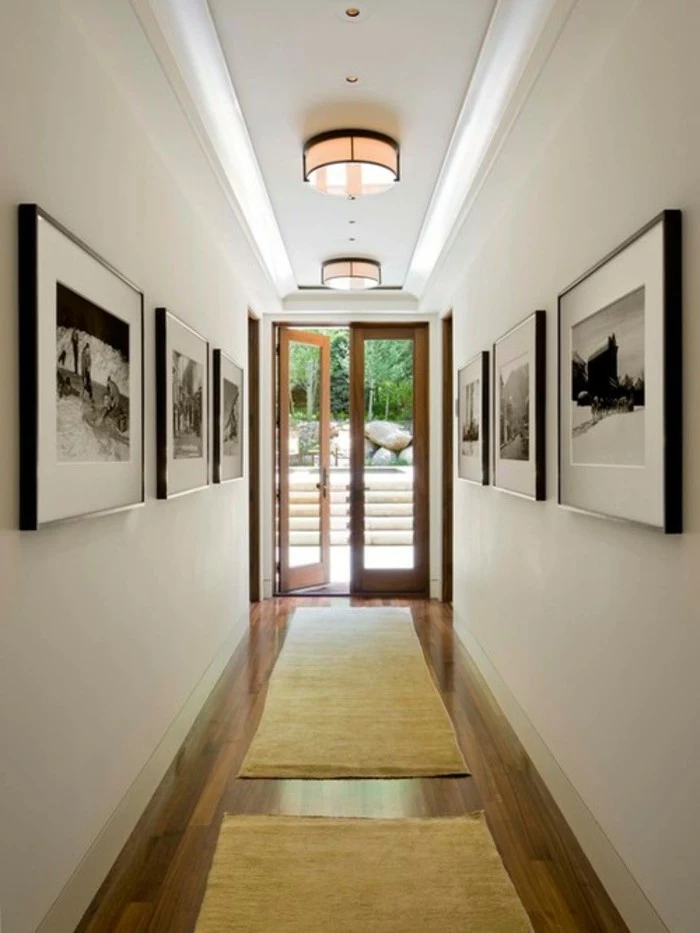
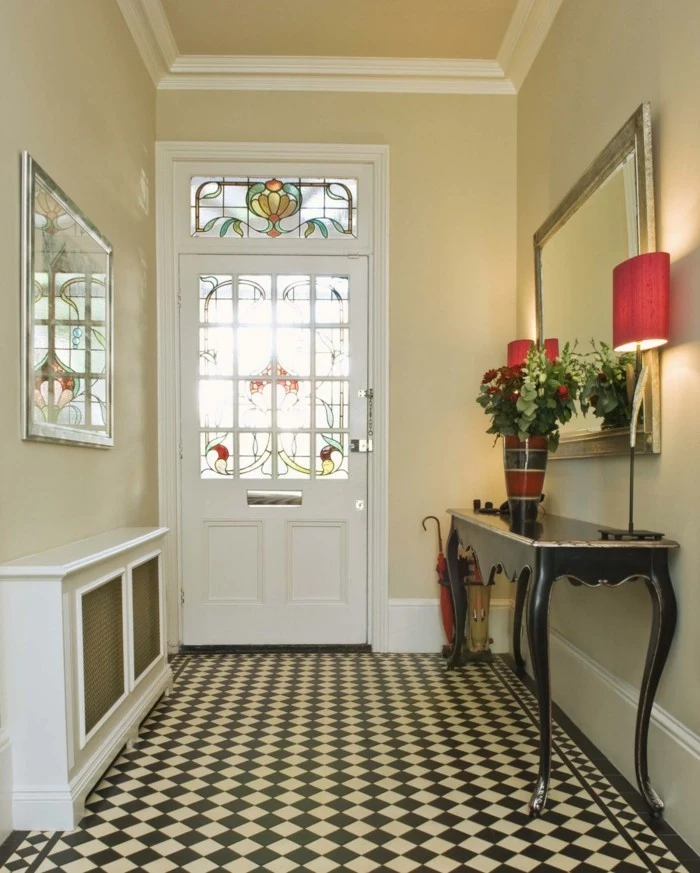
The Secret to a Clutter-Free Entry: The IKEA TRONES shoe cabinet. At only 7 inches deep, these wall-mounted units are a game-changer for narrow hallways. They provide concealed storage for shoes, scarves, and mail without protruding into the walkway. You can even use the top surface as a slim ledge for keys or a small decorative object.
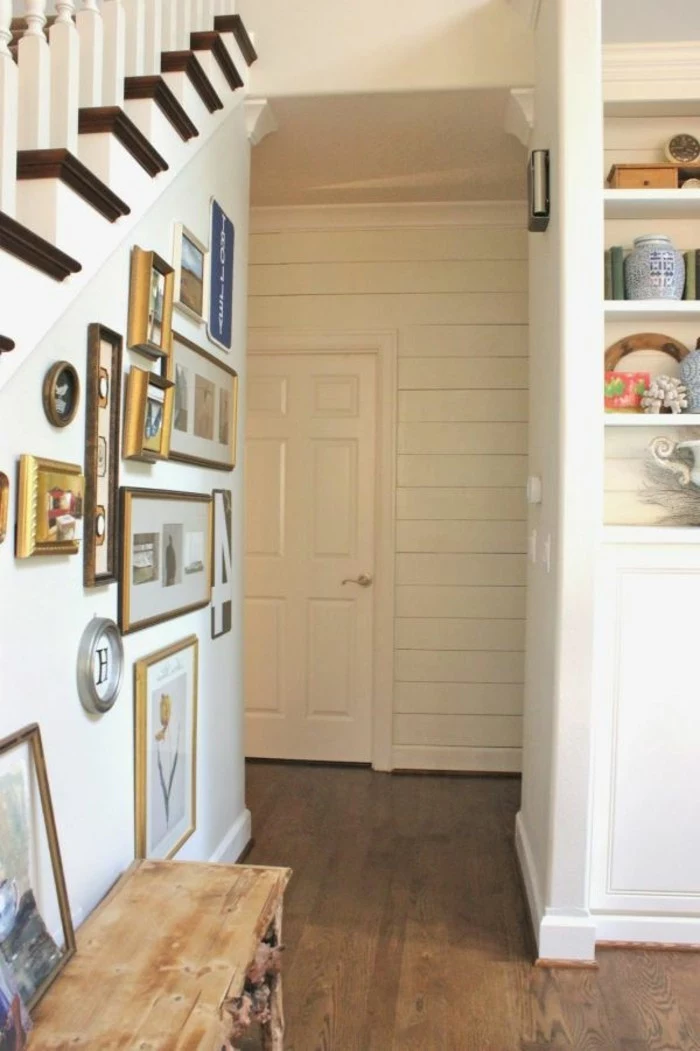
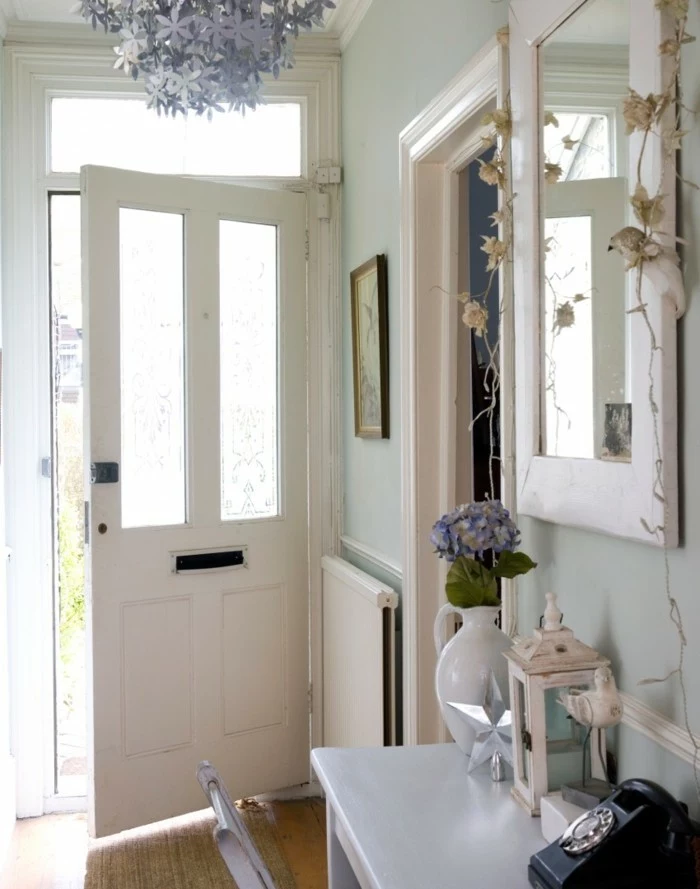
- Create an illusion of height with vertical lines.
- Introduce softness with textiles.
- Bounce light with reflective surfaces.
The secret? A well-chosen wall treatment. Consider applying a subtle, vertically striped wallpaper, like a classic pinstripe from Farrow & Ball, or installing slim, fluted wall panels to draw the eye upward and make the ceiling feel higher.
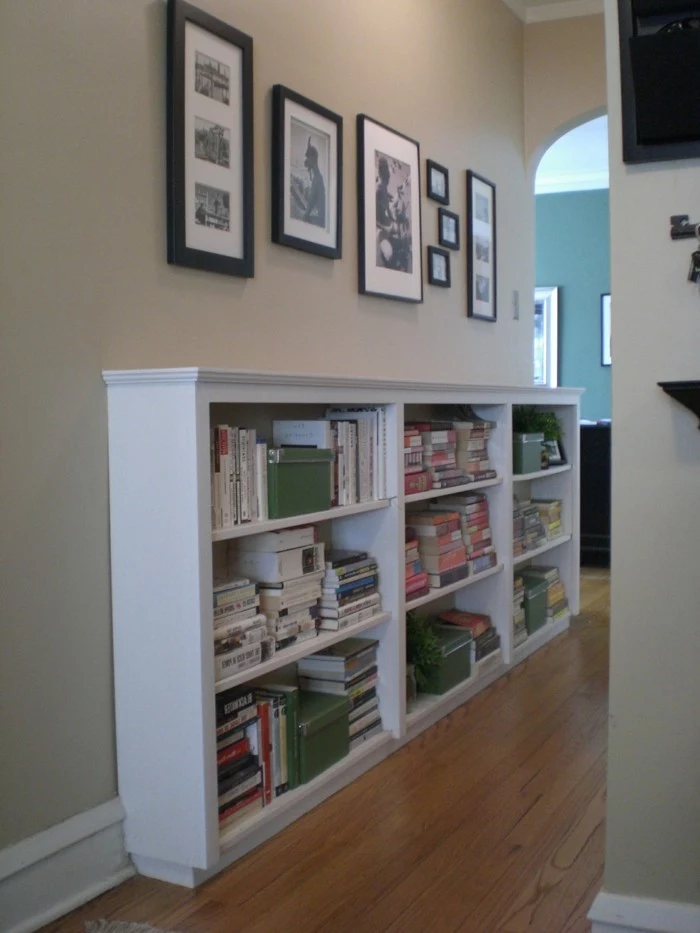
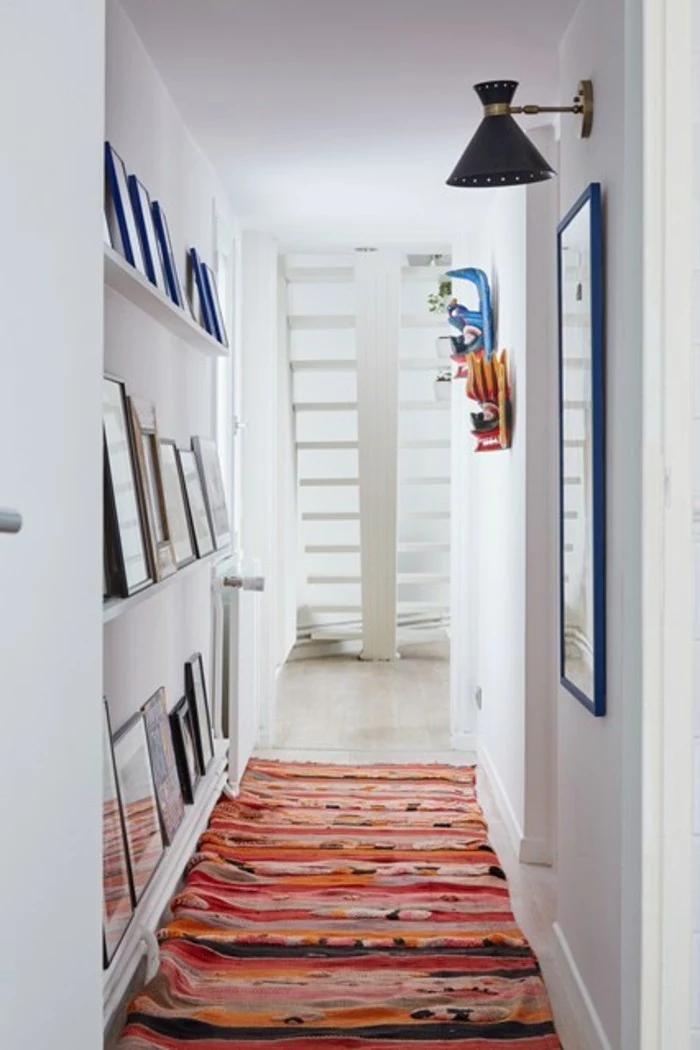
Can I really use a dark color in a tight hallway?
Absolutely, but with a strategic approach. Instead of painting all four walls a dark shade, which can feel oppressive, try ‘color drenching’ in a small section. Paint the walls, trim, and even the door at the very end of the hall in a single rich color like navy or forest green. This creates a dramatic, jewel-box effect that feels intentional and sophisticated, turning a problem area into a design moment.
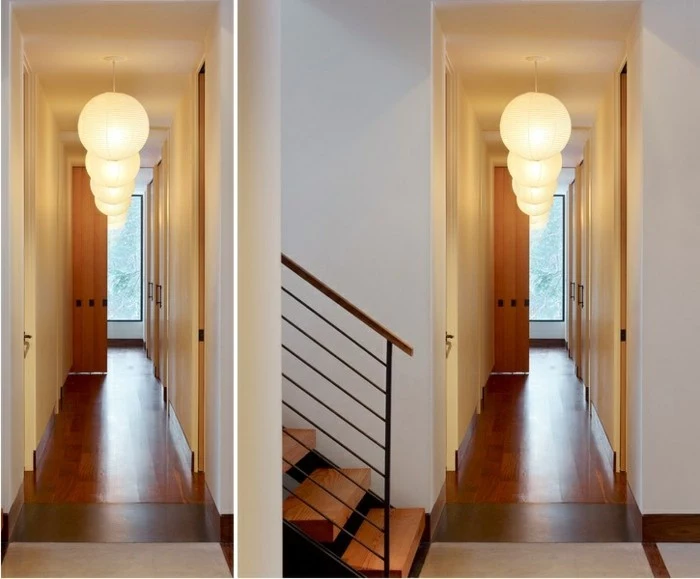
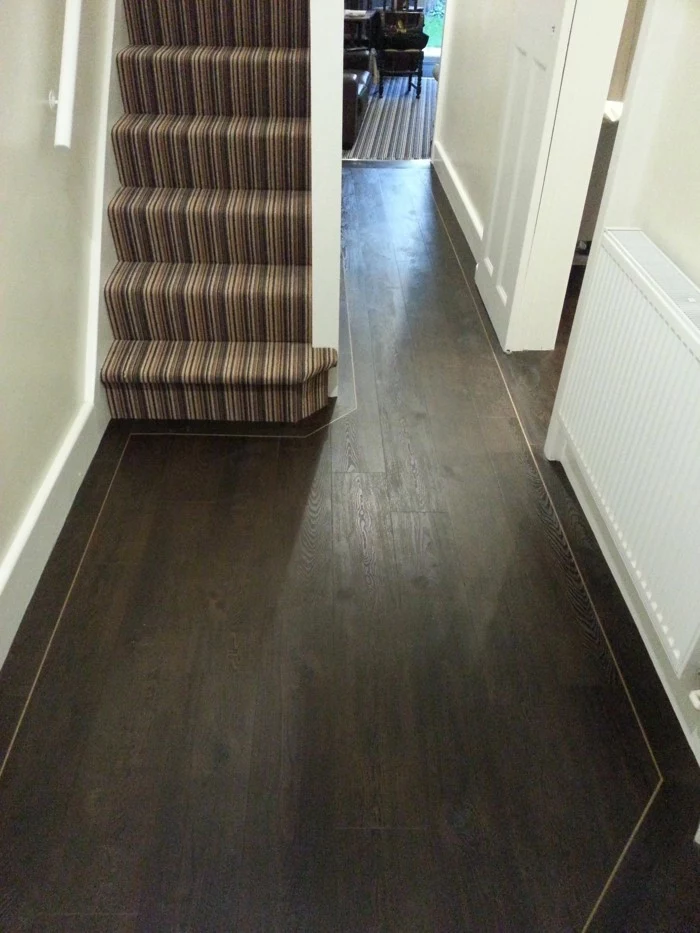
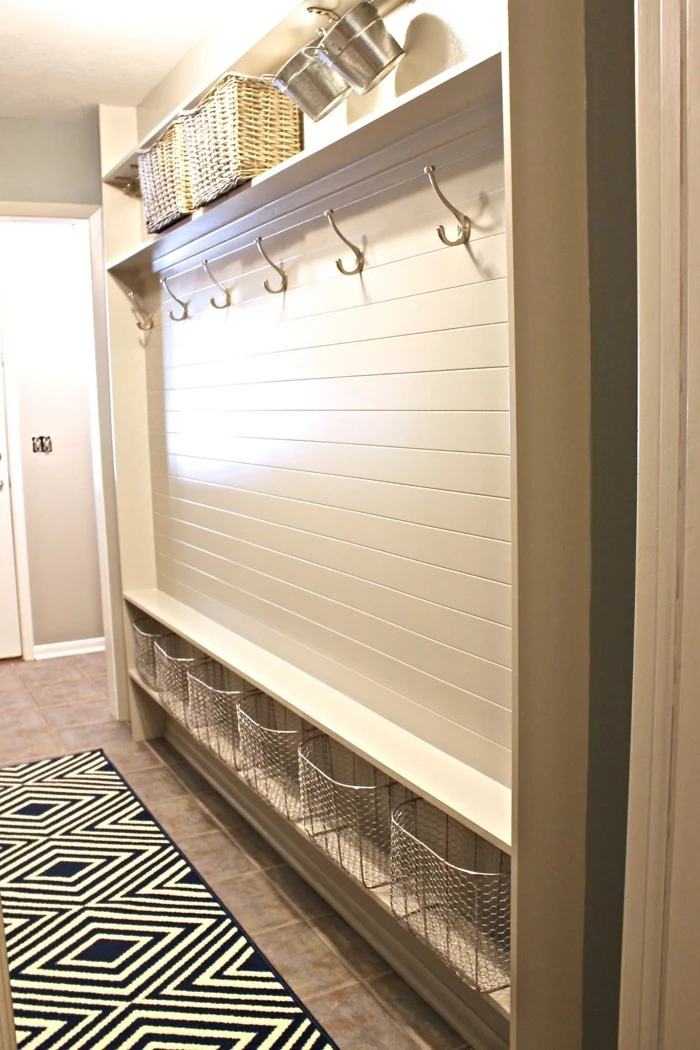
Lighting is about more than a single overhead fixture, which often casts harsh shadows. Layering your light sources adds depth and warmth.
- Flush Mounts: Choose fixtures that sit close to the ceiling to maximize headroom. Models with diffused glass provide soft, even light.
- Wall Sconces: Install sconces that direct light both up and down. This washes the walls with light, making them feel further away. Ensure they comply with ADA guidelines, not projecting more than 4 inches from the wall.
- LED Strip Lighting: For a modern touch, conceal LED strips along the baseboards or in a ceiling cove to create a beautiful, indirect glow.

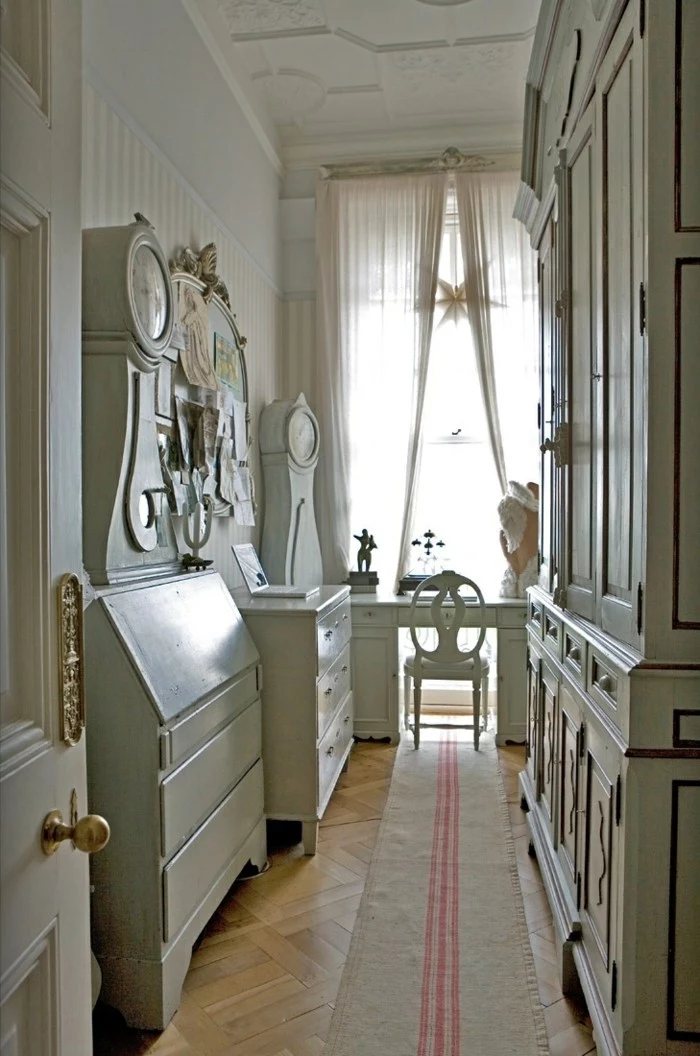
“The details are not the details. They make the design.” – Charles Eames
This is especially true in a hallway. Upgrade your standard door handles, light switches, and outlet covers. Swapping plastic switch plates for elegant brass ones from a brand like Schoolhouse or replacing a basic doorknob with a weighty, sculptural piece can elevate the entire space with minimal effort and cost.
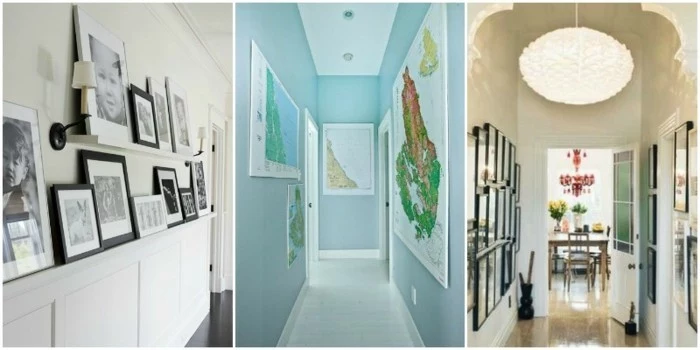
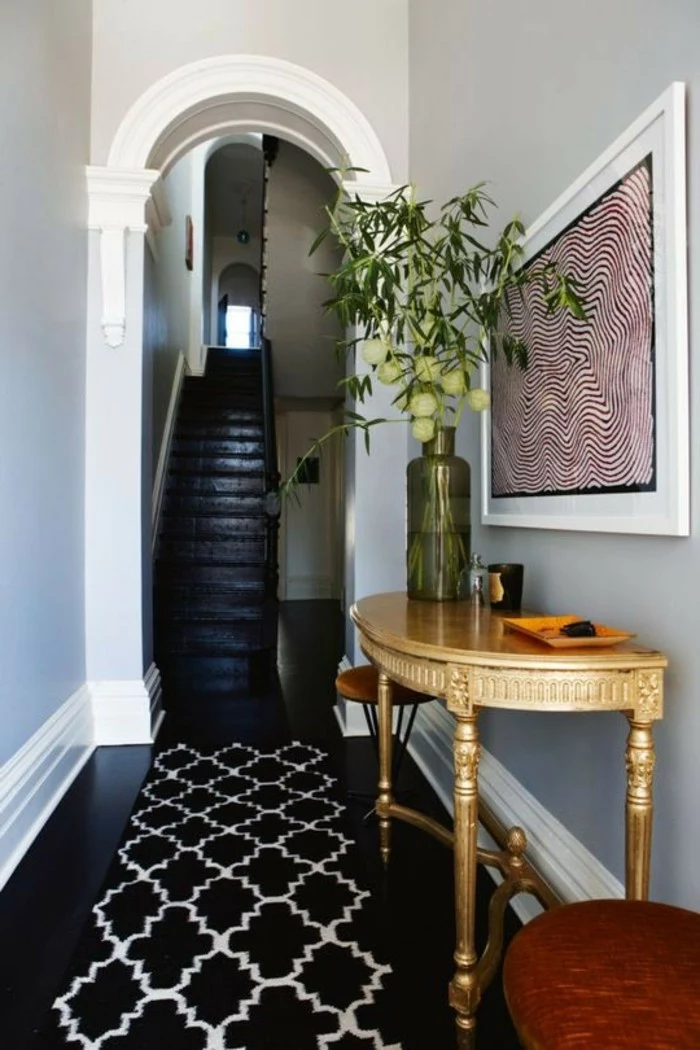
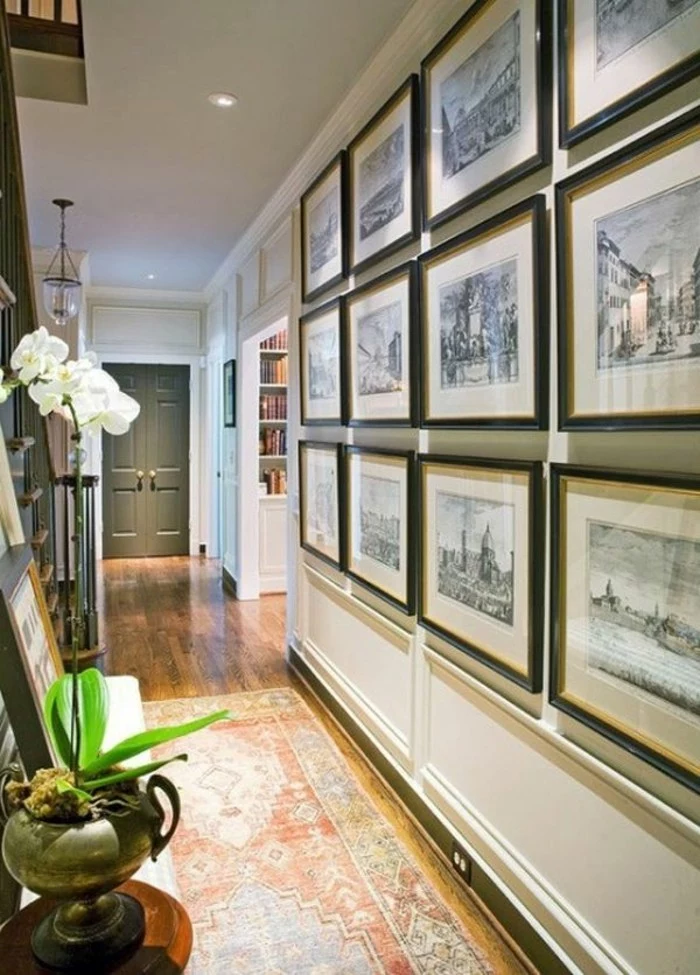
Runner Material: Jute vs. Wool.
Jute: Offers a natural, coastal texture and is very budget-friendly. It’s durable but can be a bit coarse underfoot and may shed fibers.
Wool: Incredibly soft, resilient, and naturally stain-resistant. It provides excellent durability for high-traffic areas and feels luxurious. It comes at a higher price point but is a long-term investment in comfort and quality.
For a blend of durability and softness, a wool/jute blend can be the perfect compromise.
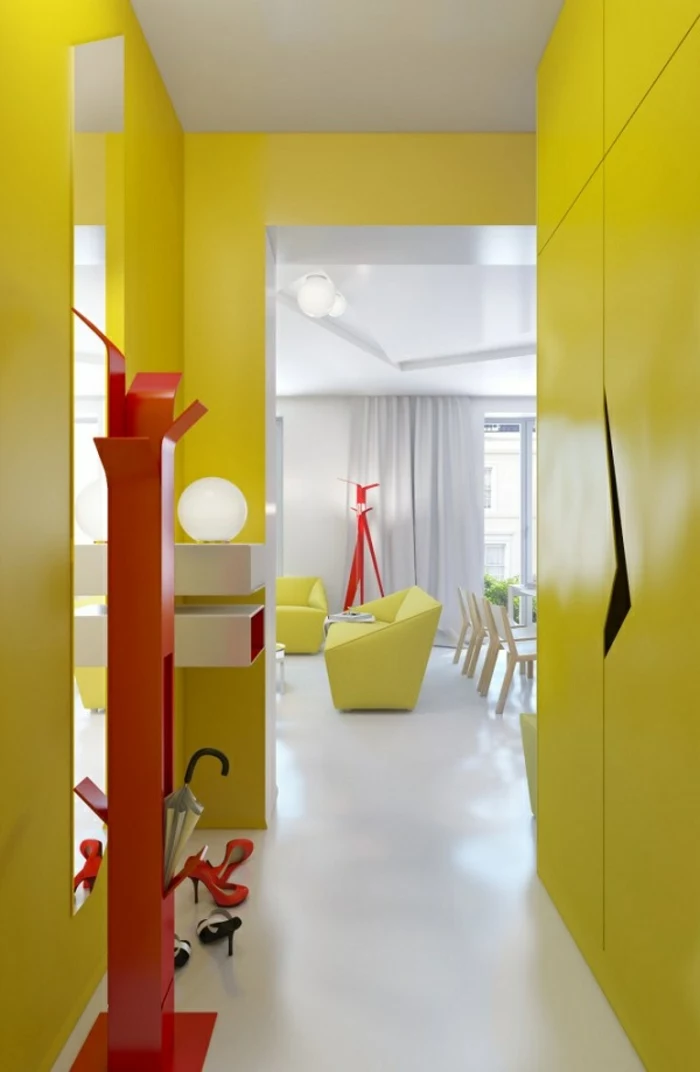
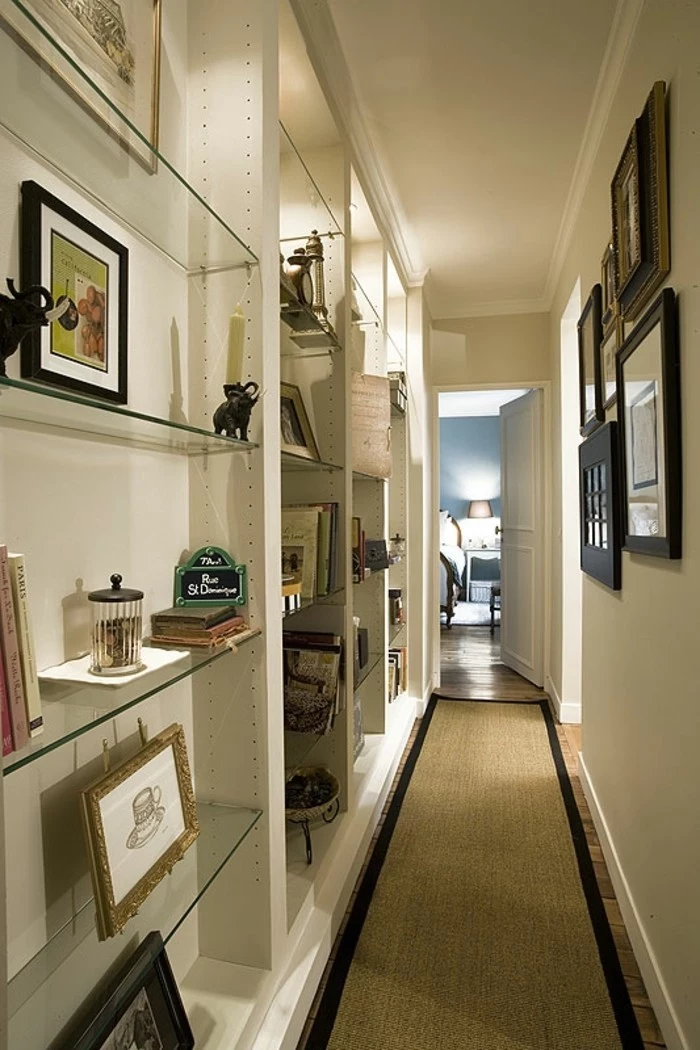
Don’t let your ceiling be an afterthought. In a narrow hall, it’s a prime opportunity to add personality without cluttering the walls or floor. Painting it a very pale sky blue can create an airy, open feeling. For a bolder statement, consider applying a stylish, large-scale wallpaper. The pattern overhead draws the eye upward, distracting from the narrow proportions of the space below.
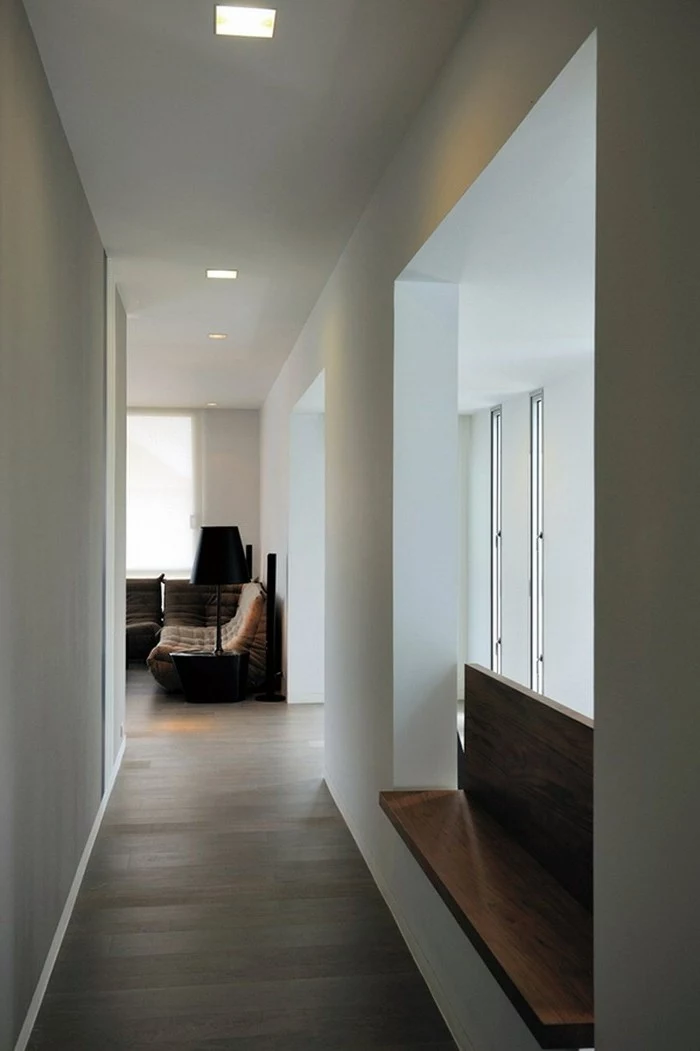
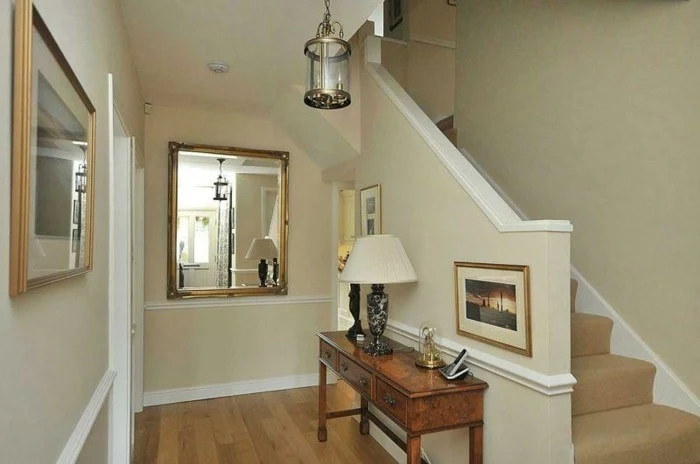
One common mistake: a gallery wall of tiny, mismatched frames. This can quickly look chaotic and make a narrow wall feel even more cluttered. For a cohesive and expansive feel, choose frames of the same color and style, and use generous white matting around your photos. A structured grid layout often works better than a random cluster in a tight space, creating a sense of order and calm.
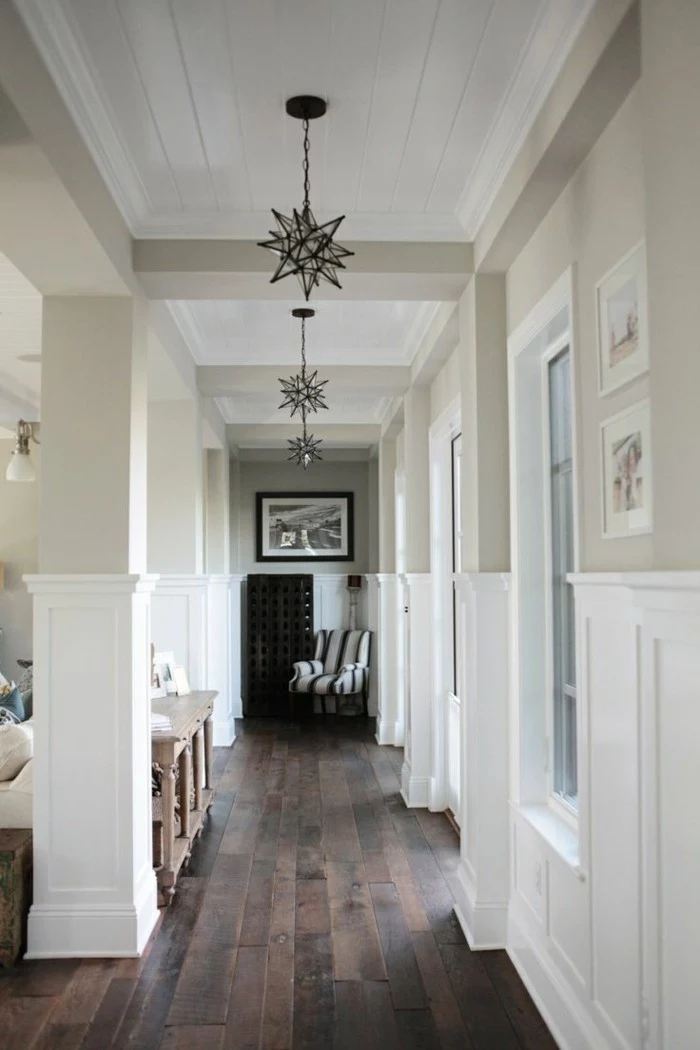
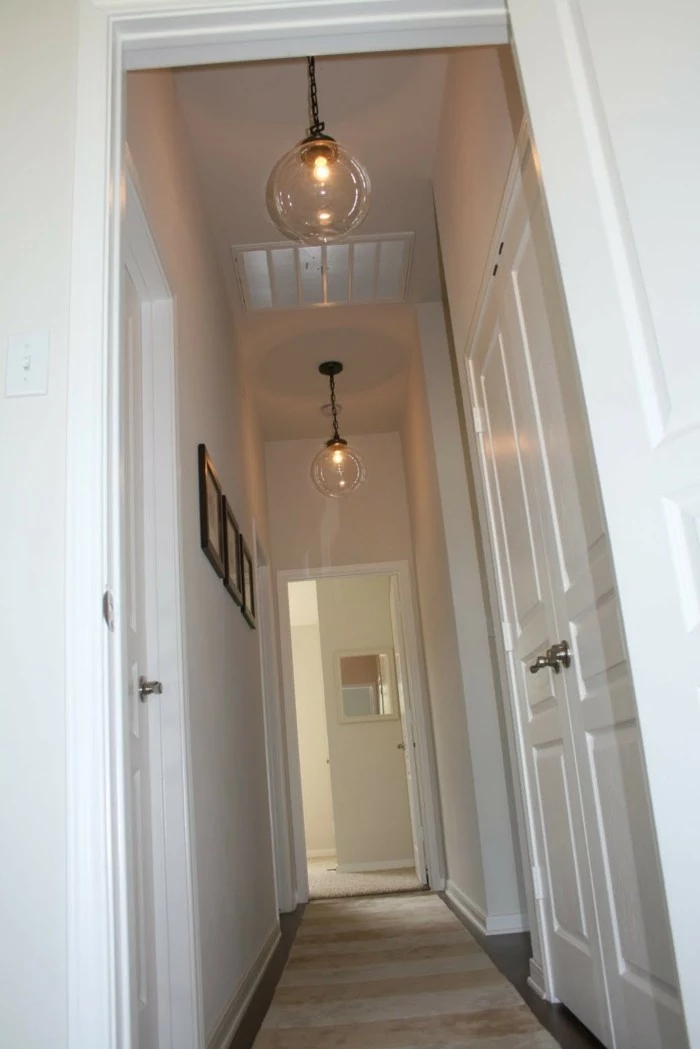
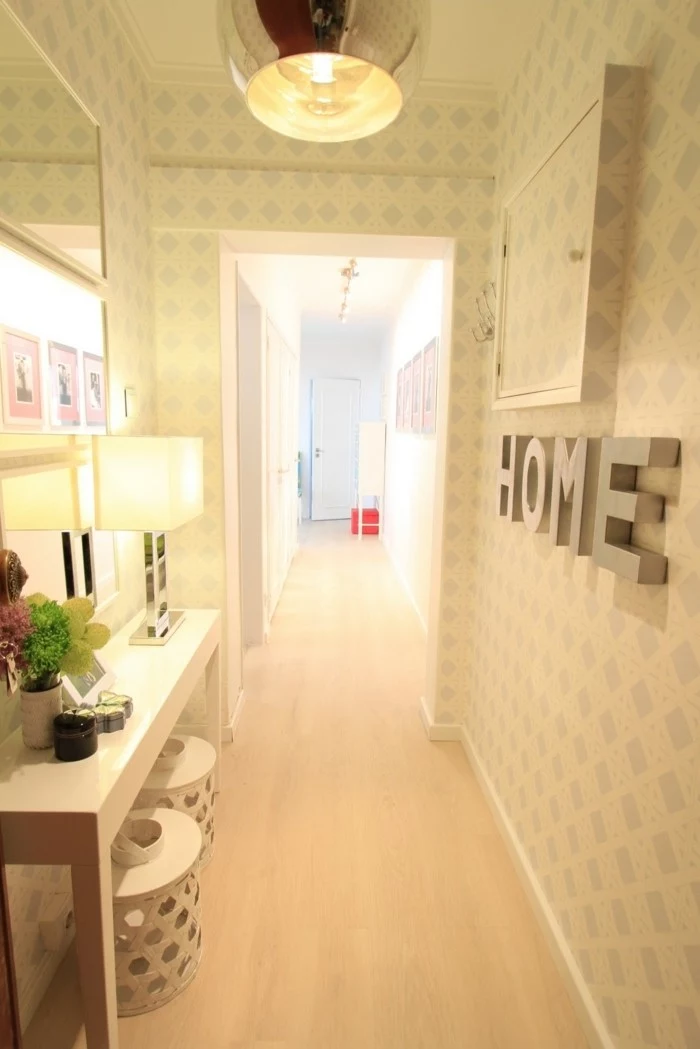
- Adds a soft, welcoming touch underfoot.
- Defines the walkway as a distinct zone.
- Absorbs sound, reducing echo in a long corridor.
The secret? Getting the proportions right. A common mistake is choosing a runner that’s too narrow. It should be just wide enough to leave an equal, pleasing border of flooring visible on both sides—typically 4 to 6 inches.
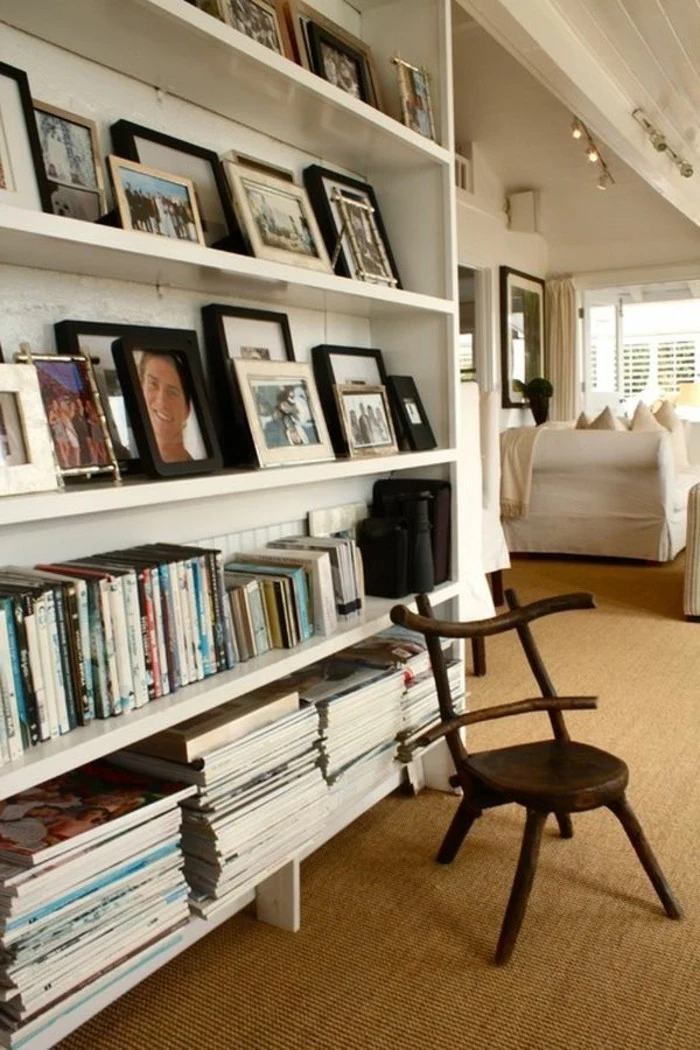
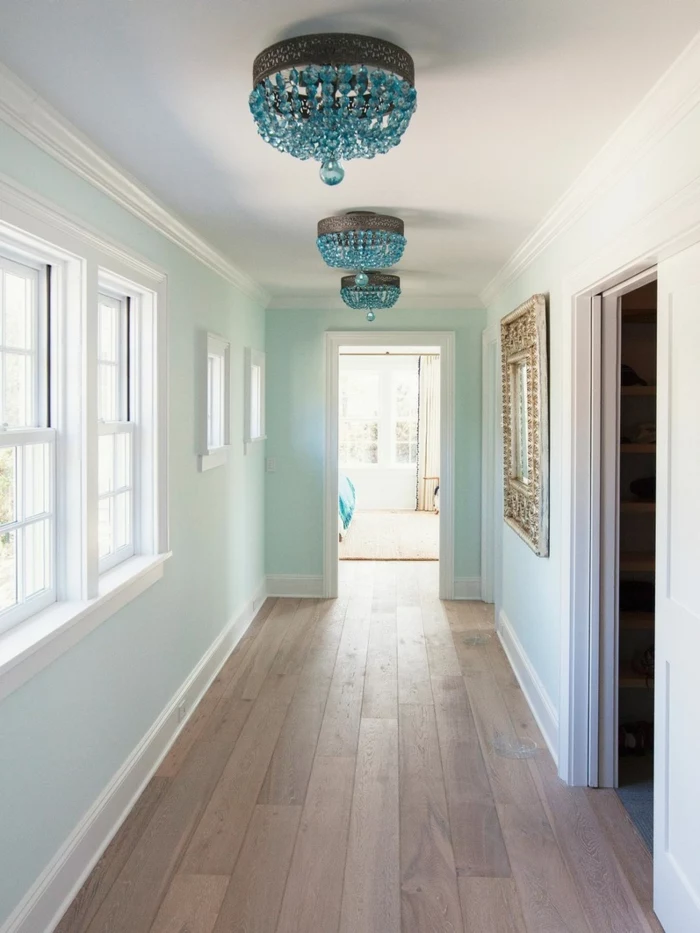
A mirror can increase the amount of perceived light in a space by nearly 100%.
The key is placement. Hanging a mirror directly opposite a light source—whether it’s a window, a doorway to a bright room, or a stylish sconce—will capture and bounce that light throughout the corridor. Avoid placing it opposite a blank wall, as it will only reflect and double the emptiness.
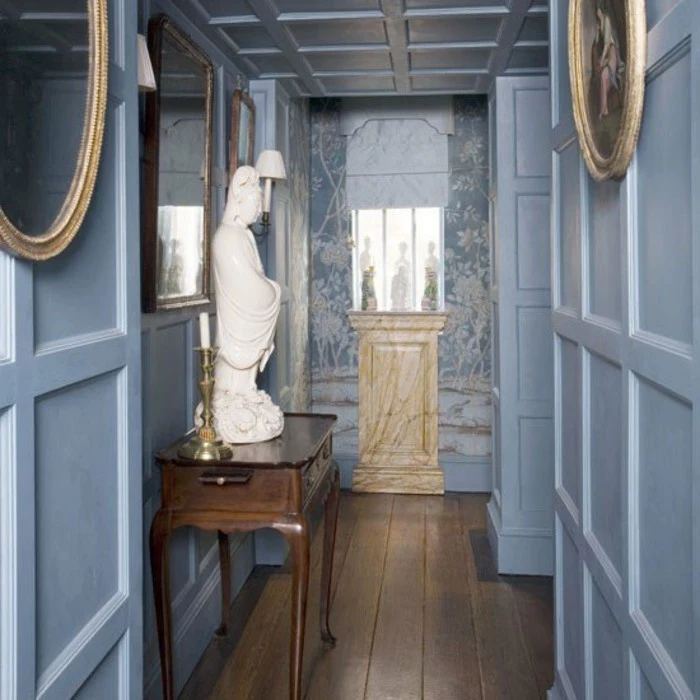
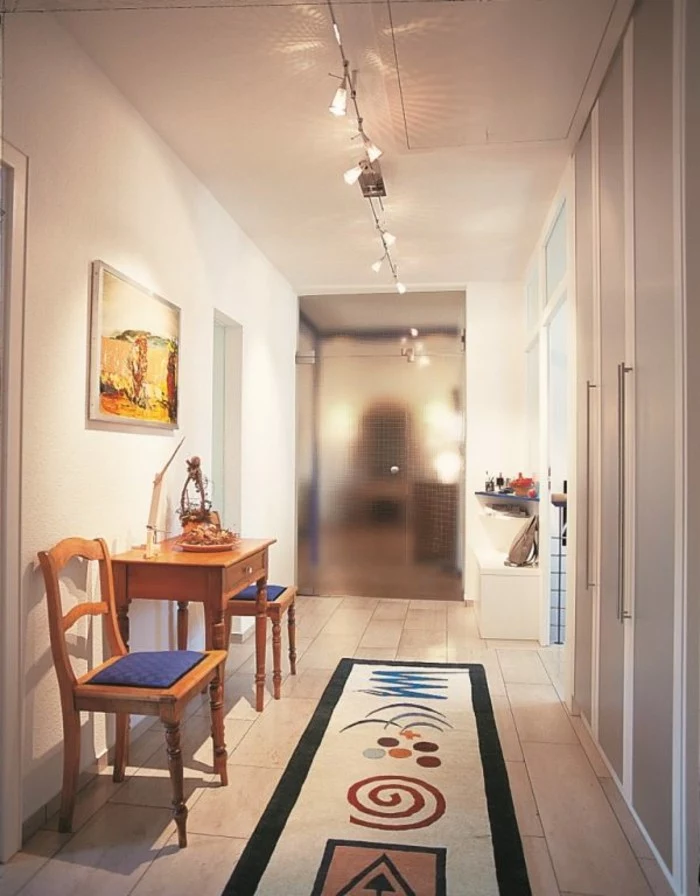
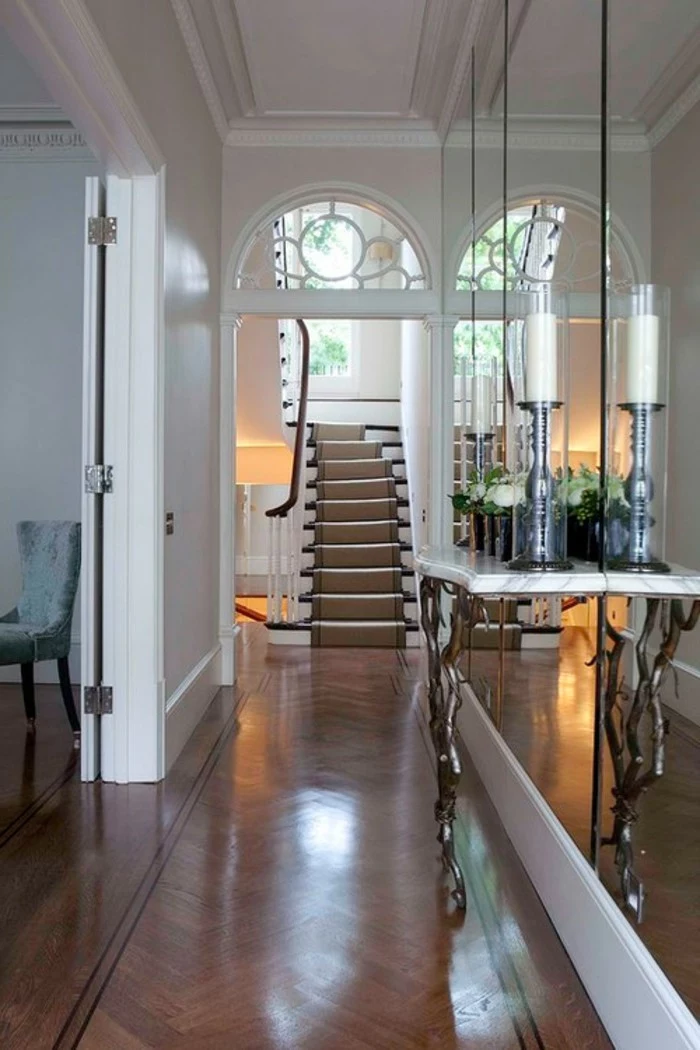
How do I add greenery without taking up precious floor space?
Think vertically. A single, wall-mounted planter with a trailing plant like a pothos or string of pearls adds a touch of life and organic shape. Alternatively, a very slim console table can host a small vase with a few elegant stems of eucalyptus. The goal is to introduce a natural element without creating an obstacle.
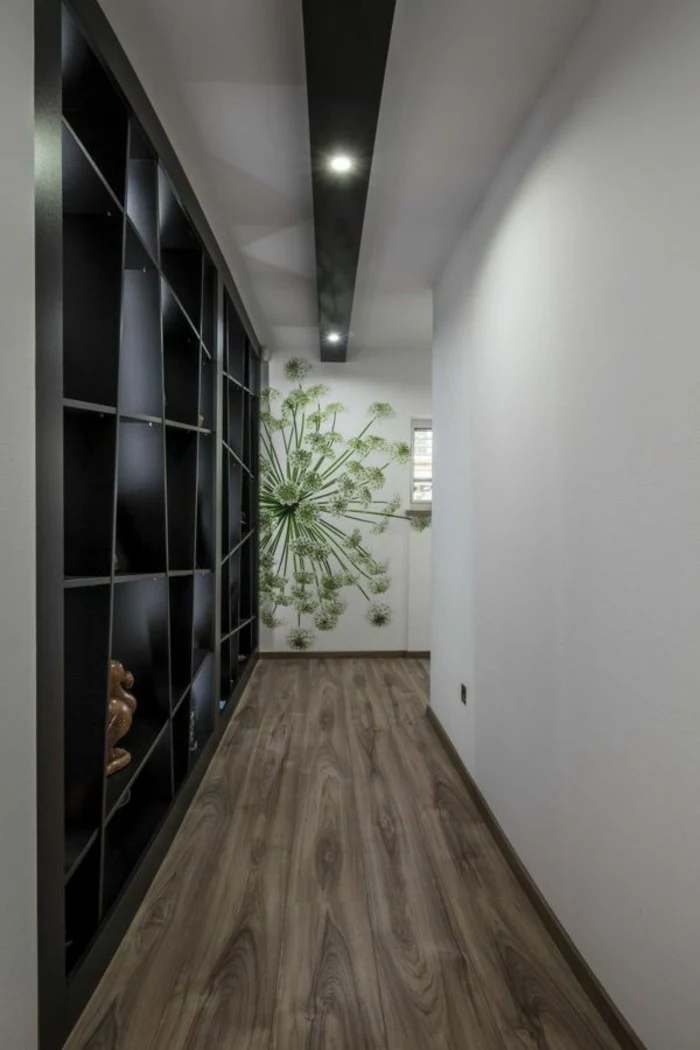
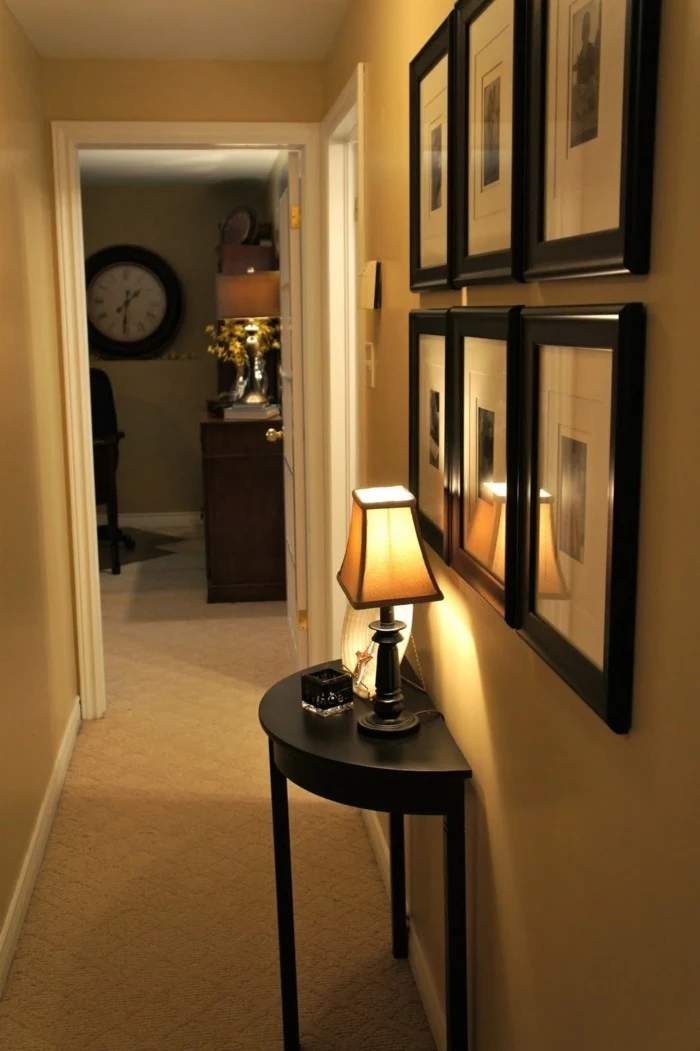
The power of a round mirror: While rectangular mirrors are classic, a large circular or oval mirror can be a superior choice for a narrow hallway. Its curved shape breaks up the harsh, straight lines of the corridor, softening the overall look and creating a more dynamic, less rigid focal point.
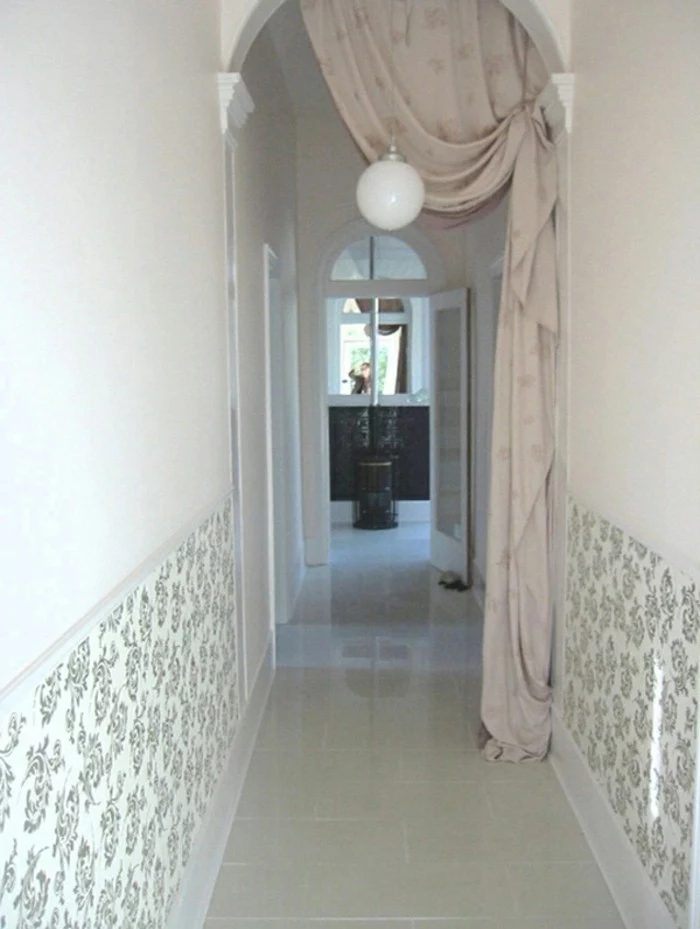

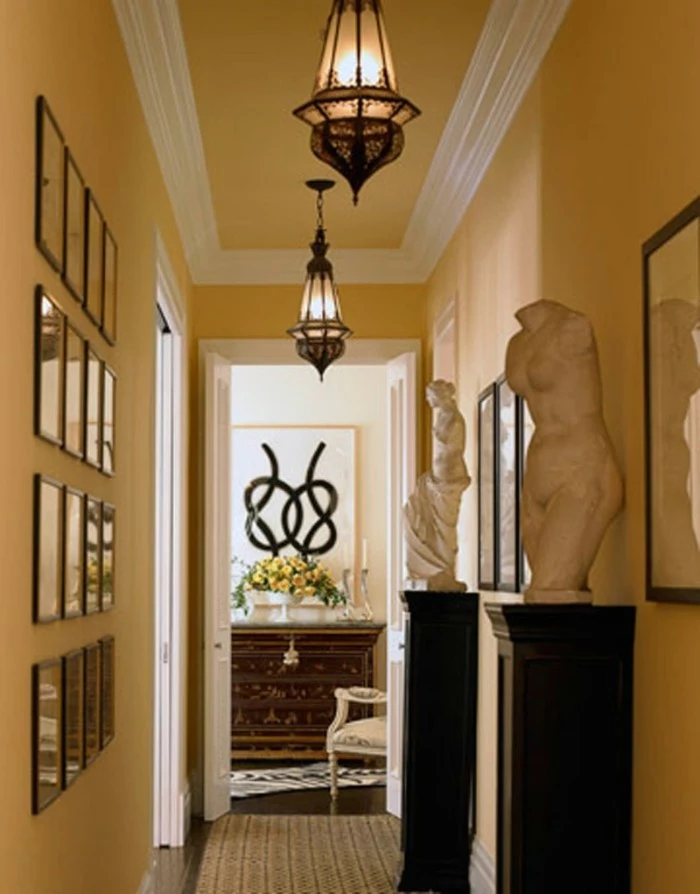
Your hallway is the first scent impression of your home. Instead of a plugin air freshener, which can be overpowering in a small space, opt for a more subtle reed diffuser. Choose a clean, welcoming fragrance like linen, white tea, or a light citrus. Place it on a slim console table or a wall-mounted shelf to create an inviting atmosphere from the moment someone steps inside.
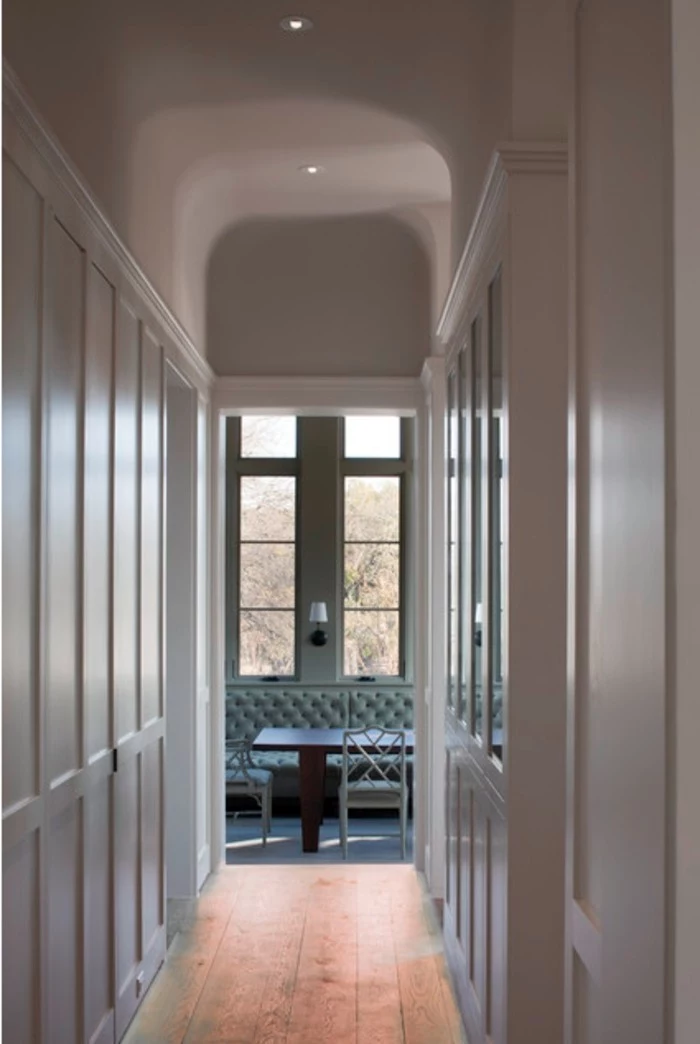
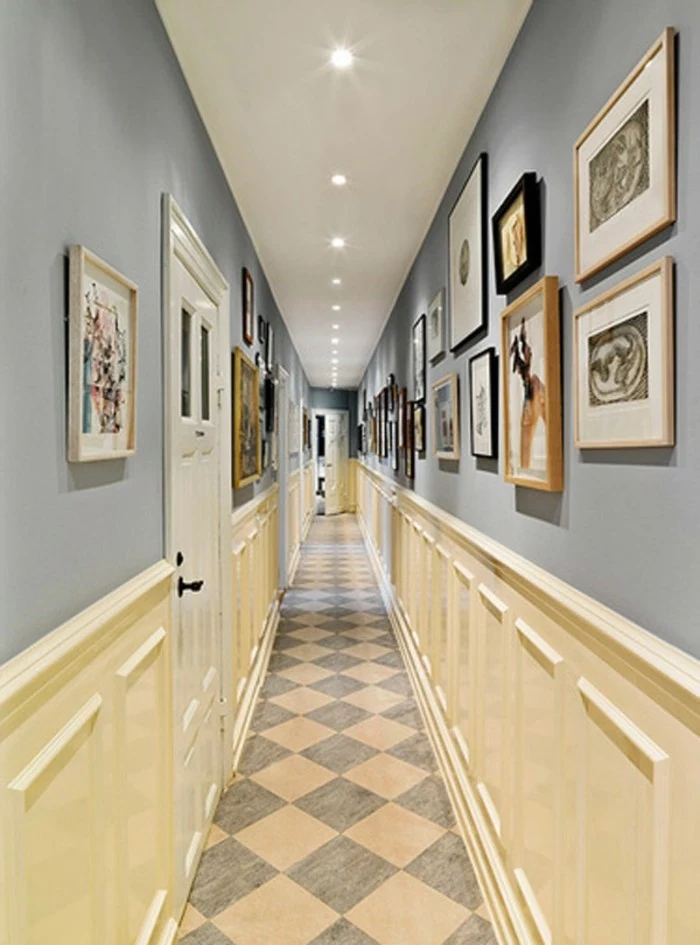
Instead of multiple small art pieces, consider the impact of one oversized work. A large-scale vertical photograph or abstract painting can become the hero of the space. It creates a single, powerful focal point that draws the eye, making the hallway feel more like a purposeful gallery and less like a simple passageway. The large scale creates a sense of grandeur that counteracts the narrowness.
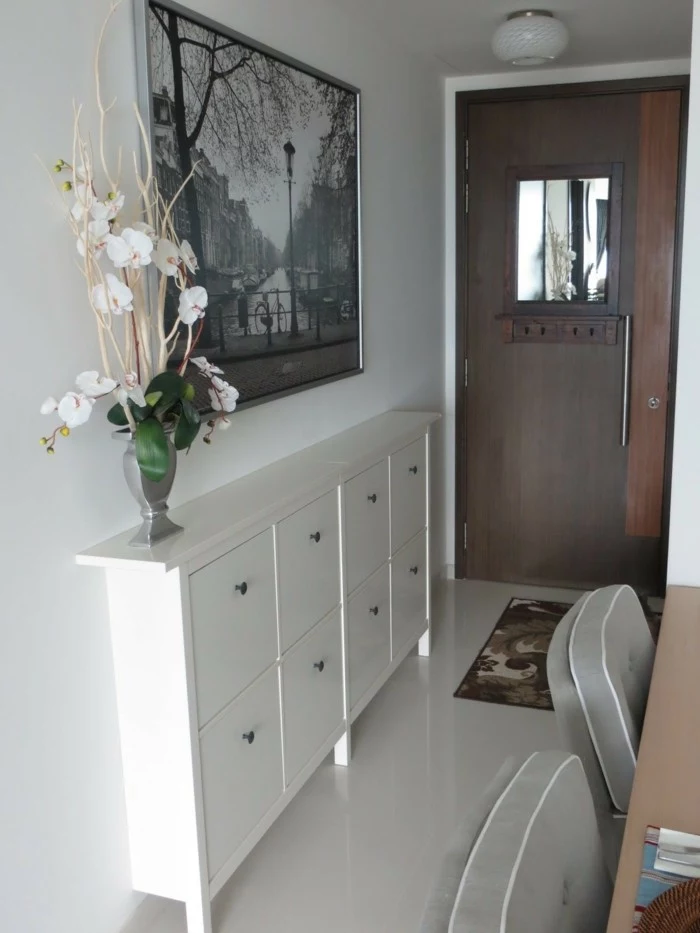
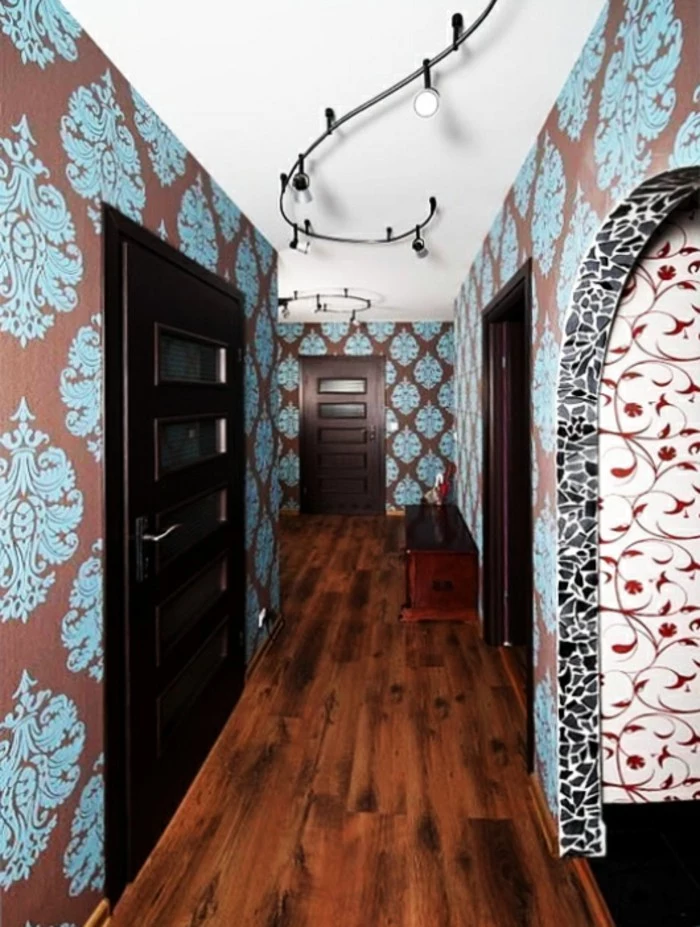
Paint Finish: Eggshell vs. Satin.
Eggshell: Has a very subtle sheen, like its namesake. It’s more durable and easier to clean than matte but offers a soft, velvety finish that diffuses light gently. It’s excellent for hiding minor wall imperfections.
Satin: Has a bit more gloss, giving it a slight glow. It’s highly durable and scrubbable, making it ideal for high-traffic areas. However, its higher sheen can highlight bumps and texture more than eggshell.
For most hallways, eggshell is the perfect middle ground, offering durability without unwanted glare. Brands like Benjamin Moore offer their most popular whites, like
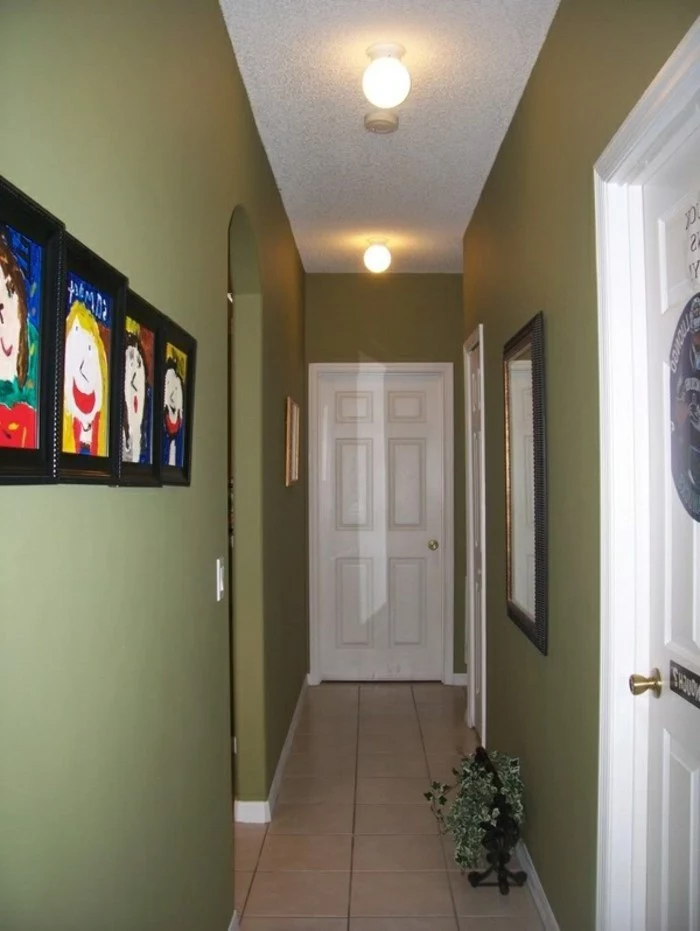
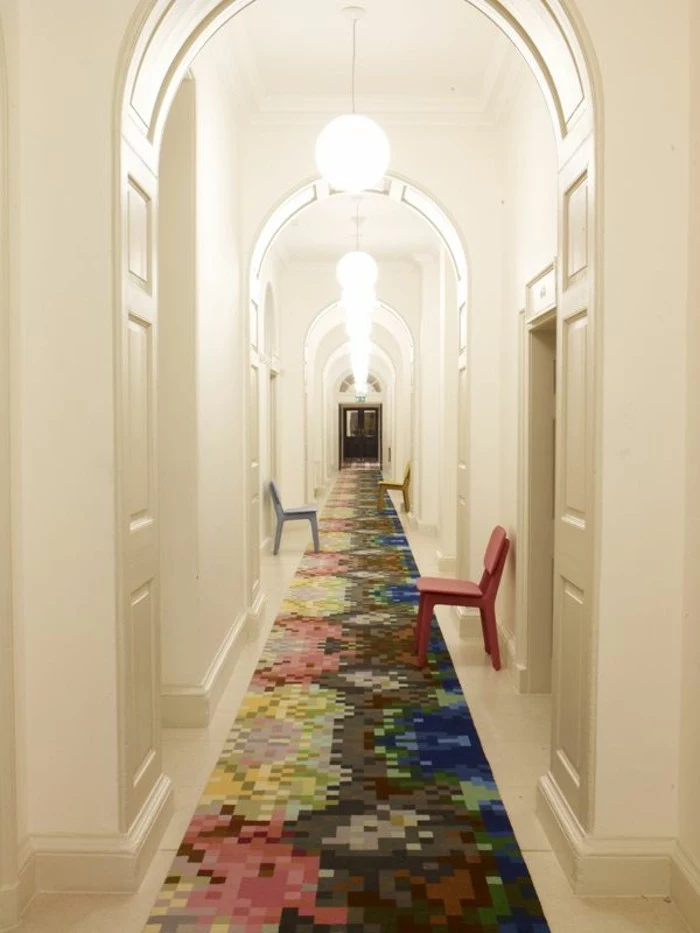
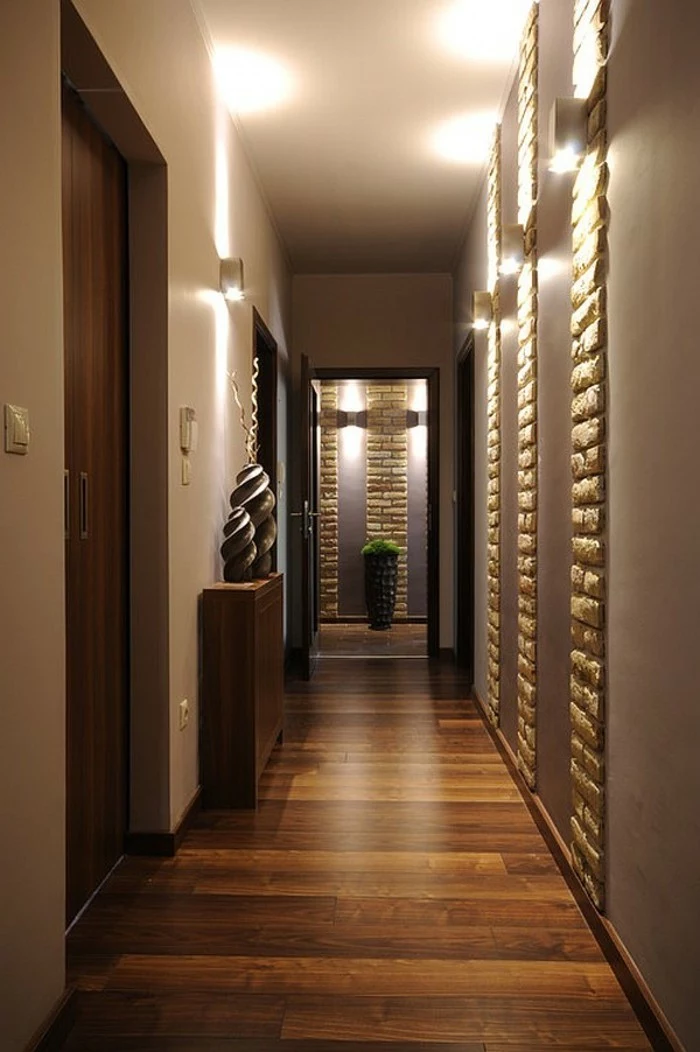
A 2014 study on interior perception showed that spaces with clearly defined ‘zones’ were rated as more organized and calming.
Use a runner to create this effect. It visually separates the ‘walking path’ from the ‘wall space’, establishing order. This simple demarcation helps the brain process the space more easily, making the entire hallway feel more intentional and less like a chaotic leftover area.
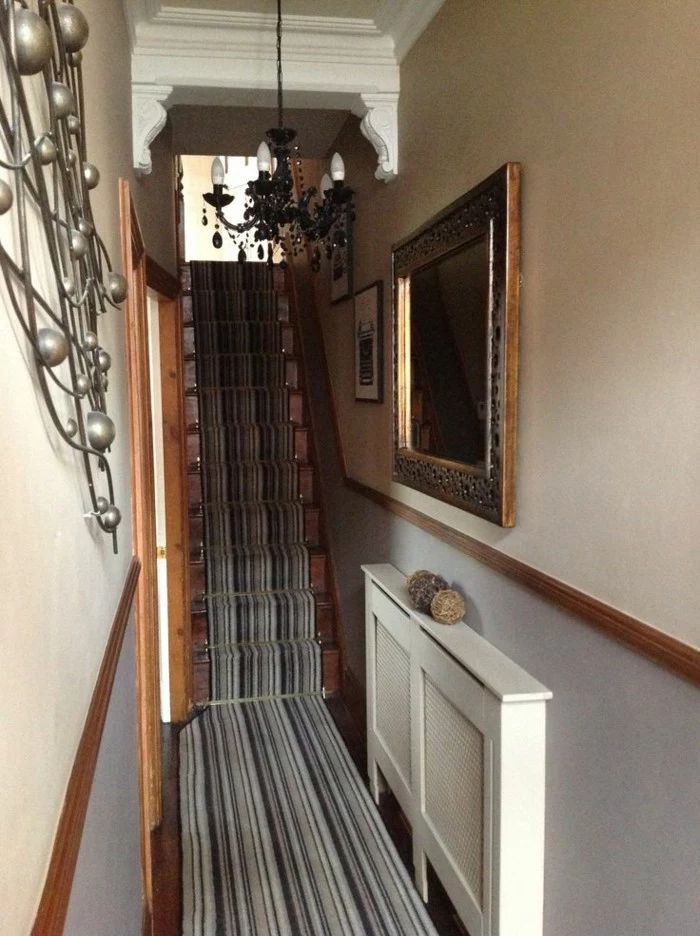
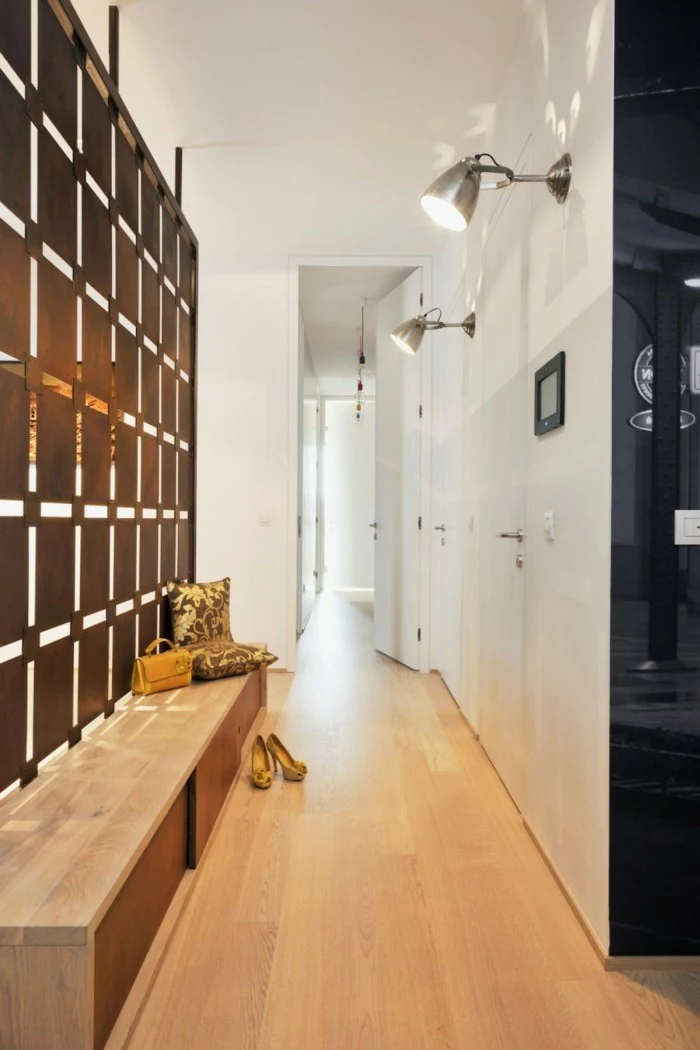
Even the direction of your floorboards plays a role. If you have the option during a renovation, laying wood or laminate planks perpendicular to the length of the hall (i.e., across the width) can make the space feel wider. The short, horizontal lines trick the eye, visually stretching the floor.
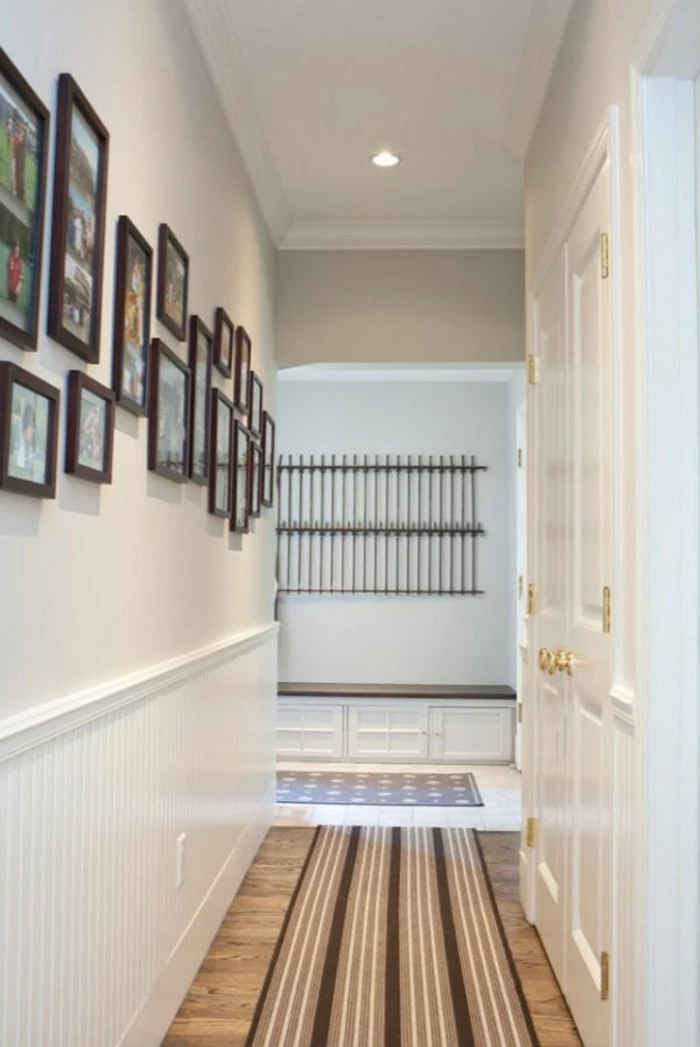
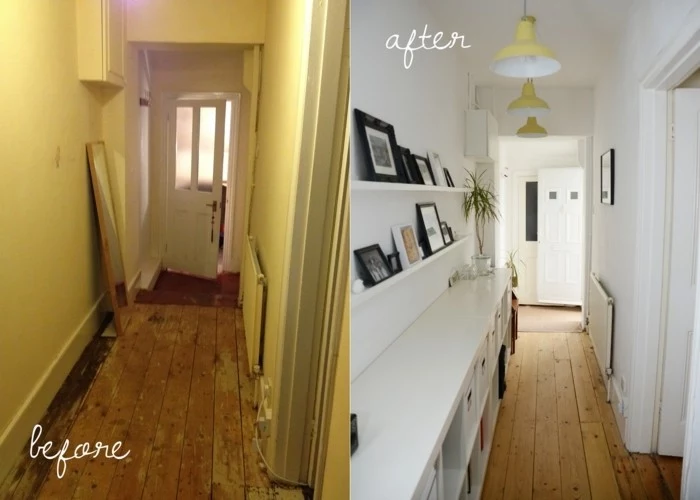
My hallway is completely interior with no windows. What’s the best lighting solution?
Create your own ‘daylight’. The key is to use multiple light sources with bulbs that mimic natural light (look for a color temperature of 3000K-4000K). Combine a stylish ceiling flush mount with two or three well-spaced wall sconces. This eliminates the ‘cave effect’ by washing the walls and ceiling with layers of bright, even light, simulating the ambiance of a sunlit room.
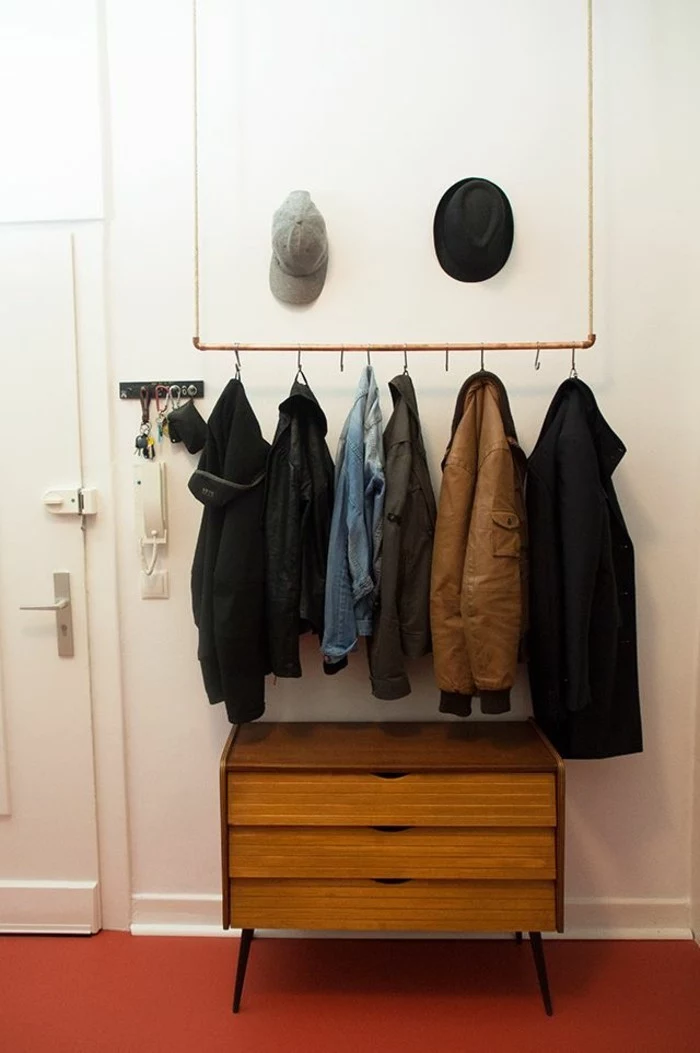
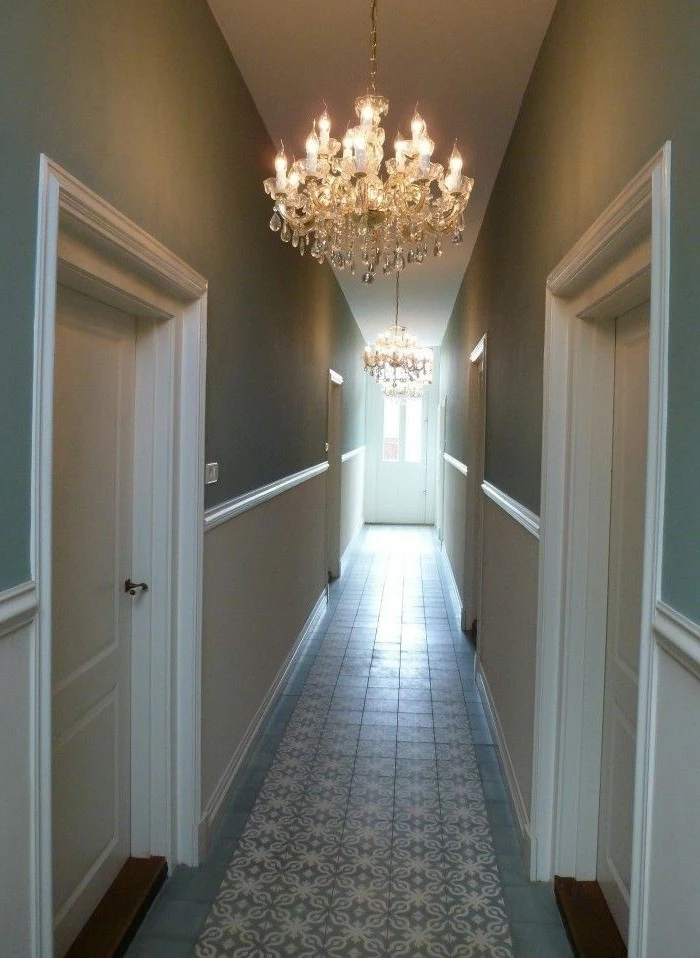
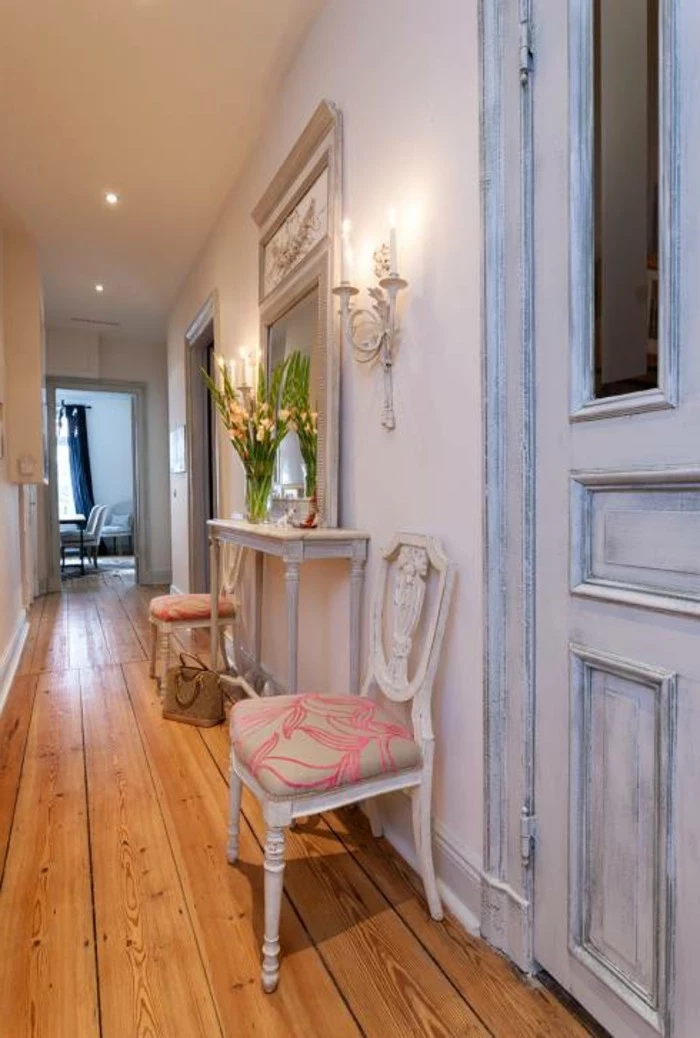
Consider a ‘floating’ console table or shelf. By mounting it to the wall, you keep the floor area completely clear. This creates an unbroken sightline along the floor, which is a powerful psychological trick for making any space feel larger and more open. It provides a necessary surface for keys and mail without visually cluttering the narrow path.
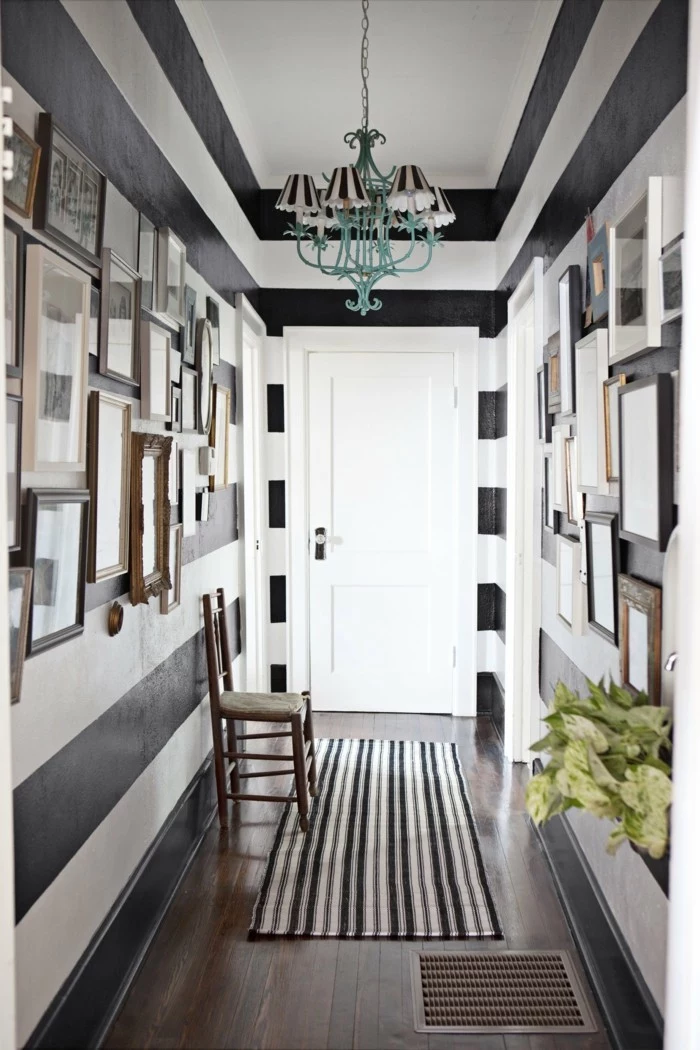
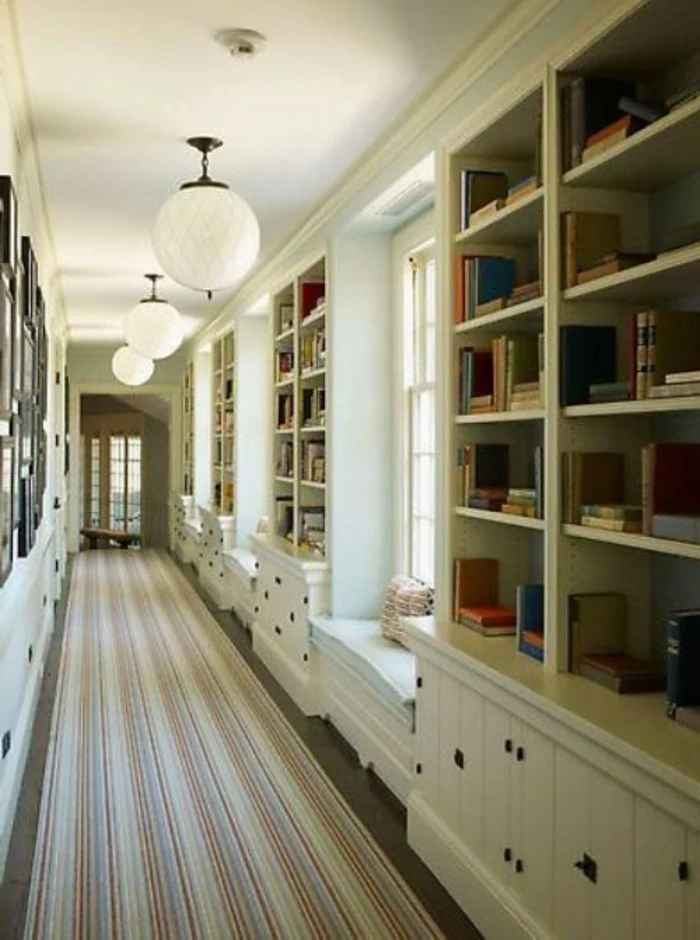
The ‘Rule of Threes’ is a powerful design principle.
In a hallway, applying this can create rhythm and interest without overwhelming the space. Instead of a single light, try a series of three identical, small pendant lights. Or, hang a trio of identically framed pictures in a vertical or horizontal line. This repetition is pleasing to the eye and adds a touch of sophisticated, curated design.
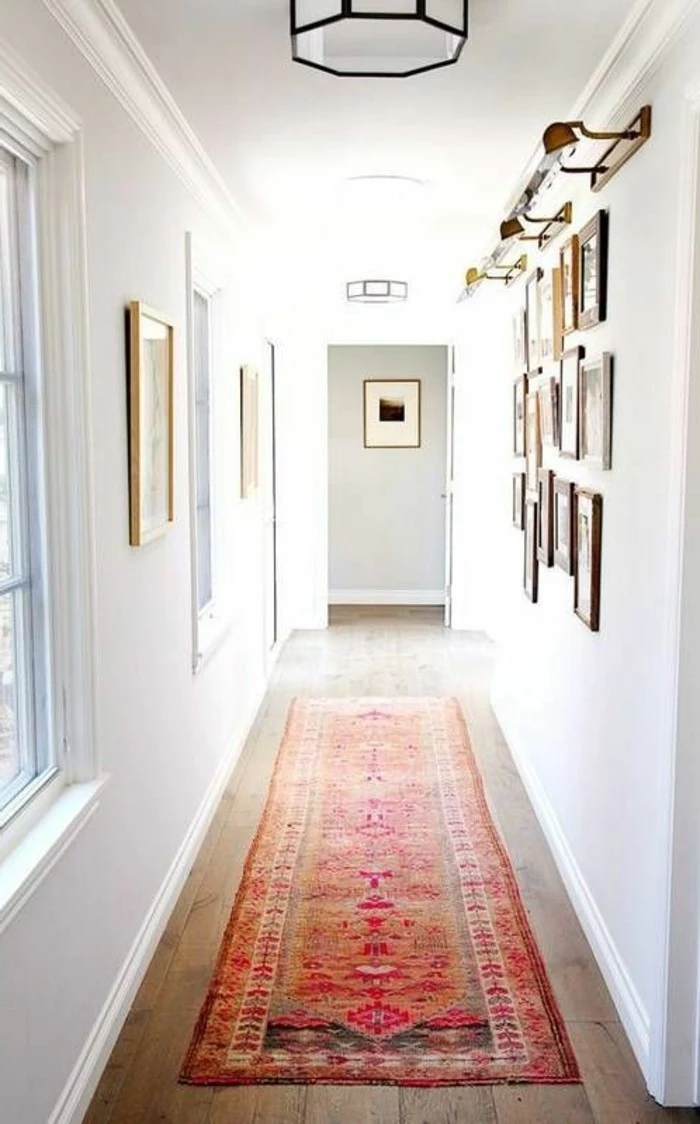
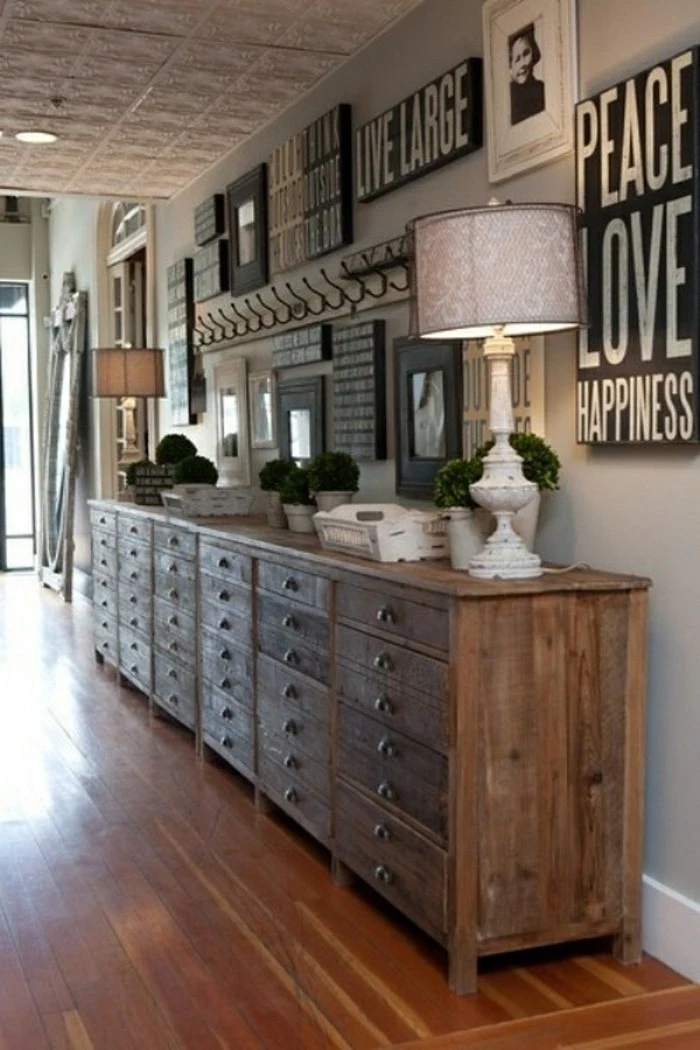
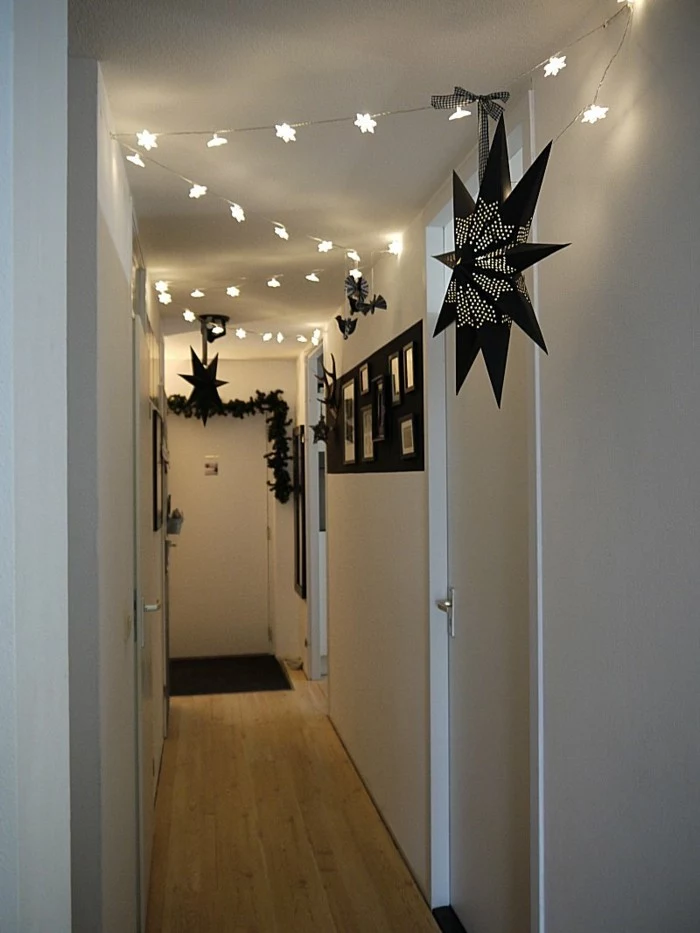
Want the look of statement floor tiles without the cost and commitment of a total renovation? High-quality peel-and-stick vinyl tiles have come a long way. Brands like FloorPops and Chasing Paper offer stunning, durable designs—from classic checkerboard to intricate Moroccan patterns—that can be installed in an afternoon for a high-impact, budget-friendly transformation.
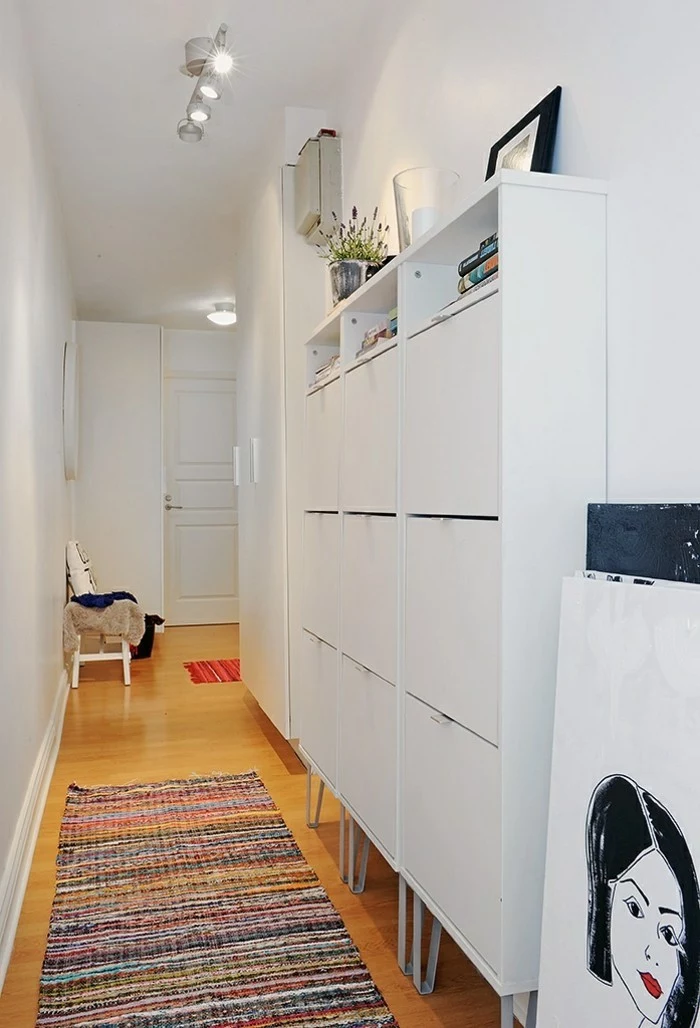
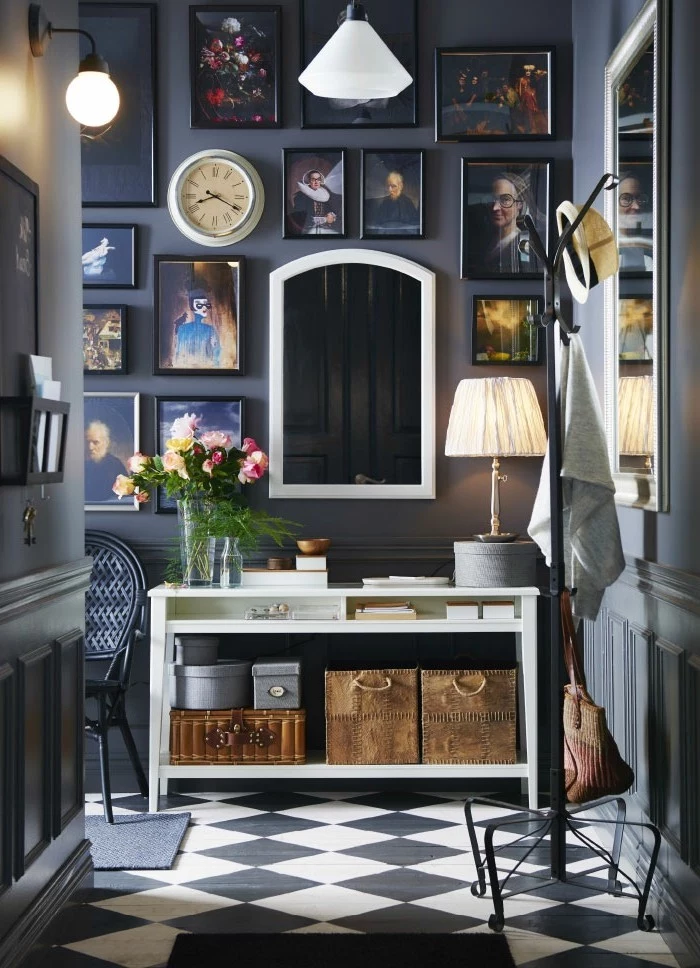
Don’t forget the doors. In a narrow hall, doors can take up a lot of visual real estate. Painting them the exact same color and finish as the walls helps them blend in, creating a seamless, uninterrupted line that makes the space feel wider. For a touch of class, add high-quality, elegant hardware that feels good to the touch.
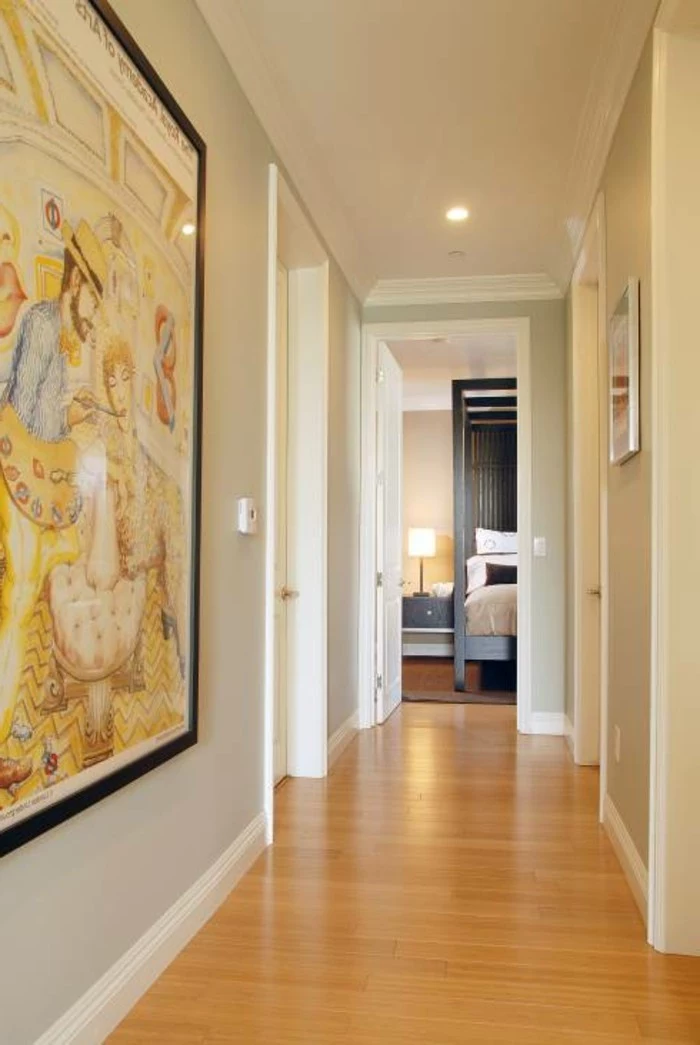
- Draws the eye upward, creating an illusion of height.
- Reflects light from ceiling fixtures across the space.
- Adds a luxurious, unexpected design element.
The secret? A high-gloss ceiling. While high-gloss is a mistake on walls, painting the ceiling with a glossy finish in a very light color (or even white) can have a stunning, lacquered effect. It bounces light beautifully and adds a layer of sophisticated depth to an otherwise forgotten surface.

